
- Oct 13, 2019

10 Steps to Problem Solving for Engineers
Updated: Dec 6, 2020
With the official launch of the engineering book 10+1 Steps to Problem Solving: An Engineer's Guide it may be interesting to know that formalization of the concept began in episode 2 of the Engineering IRL Podcast back in July 2018.
As noted in the book remnants of the steps had existed throughout my career and in this episode I actually recorded the episode off the top of my head.
My goal was to help engineers build a practical approach to problem solving.
Have a listen.
Who can advise on the best approach to problem solving other than the professional problem solvers - Yes. I'm talking about being an Engineer.
There are 2 main trains of thought with Engineering work for non-engineers and that's trying to change the world with leading edge tech and innovations, or plain old boring math nerd type things.
Whilst, somewhat the case what this means is most content I read around Tech and Engineering are either super technical and (excruciatingly) detailed. OR really riff raff at the high level reveling at the possibilities of changing the world as we know it. And so what we end up with is a base (engineer only details) and the topping (media innovation coverage) but what about the meat? The contents?
There's a lot of beauty and interesting things there too. And what's the centrepiece? The common ground between all engineers? Problem solving.
The number one thing an Engineer does is problem solving. Now you may say, "hey, that's the same as my profession" - well this would be true for virtually every single profession on earth. This is not saying there isn't problem solving required in other professions. Some problems require very basic problem solving techniques such is used in every day life, but sometimes problems get more complicated, maybe they involve other parties, maybe its a specific quirk of the system in a specific scenario. One thing you learn in engineering is that not all problems are equal. These are
The stages of problem solving like a pro:
Is the problem identified (no, really, are you actually asking the right question?)
Have you applied related troubleshooting step to above problem?
Have you applied basic troubleshooting steps (i.e. check if its plugged in, turned it on and off again, checked your basics)
Tried step 2 again? (Desperation seeps in, but check your bases)
Asked a colleague or someone else that may have dealt with your problem? (50/50 at this point)
Asked DR. Google (This is still ok)
Deployed RTFM protocol (Read the F***ing Manual - Engineers are notorious for not doing this)
Repeated tests, changing slight things, checking relation to time, or number of people, or location or environment (we are getting DEEP now)
Go to the bottom level, in networking this is packet sniffers to inspect packets, in systems this is taking systems apart and testing in isolation, in software this is checking if 1 equals 1, you are trying to prove basic human facts that everyone knows. If 1 is not equal to 1, you're in deep trouble.At this point you are at rebuild from scratch, re install, start again as your answer (extremely expensive, very rare)
And there you have it! Those are your levels of problem solving. As you go through each step, the more expensive the problem is. -- BUT WAIT. I picked something up along the way and this is where I typically thrive. Somewhere between problem solving step 8 and 10.

The secret step
My recommendation at this point is to try tests that are seemingly unrelated to anything to do with the problem at all.Pull a random cable, test with a random system off/on, try it at a specific time of the day, try it specifically after restarting or replugging something in. Now, not completely random but within some sort of scope. These test are the ones that when someone is having a problem when you suggest they say "that shouldn't fix the problem, that shouldn't be related" and they are absolutely correct.But here's the thing -- at this stage they have already tried everything that SHOULD fix the problem. Now it's time for the hail mary's, the long shots, the clutching at straws. This method works wonders for many reasons. 1. You really are trying to try "anything" at this point.
2. Most of the time we may think we have problem solving step number 1 covered, but we really don't.
3. Triggering correlations.
This is important.
Triggering correlations
In a later post I will cover correlation vs causation, but for now understand that sometimes all you want to do is throw in new inputs to the system or problem you are solving in order to get clues or re identify problems or give new ways to approach earlier problem solving steps. There you have it. Problem solve like a ninja. Approach that extremely experienced and smart person what their problem and as they describe all the things they've tried, throw in a random thing they haven't tried. And when they say, well that shouldn't fix it, you ask them, well if you've exhausted everything that should have worked, this is the time to try things that shouldn't. Either they will think of more tests they haven't considered so as to avoid doing your preposterous idea OR they try it and get a new clue to their problem. Heck, at worst they confirm that they do know SOMETHING about the system.
Go out and problem solve ! As always, thanks for reading and good luck with all of your side hustles.
If you prefer to listen to learn we got you covered with the Engineering IRL show!
For Youtube please go to:
https://youtu.be/EHaRNZhqmHA
For Spotify please go to:
https://open.spotify.com/show/3UZPfOvNwQkaCA1jLIOxp4
And don't forget to subscribe if you get any value from the Engineering IRL Content
- Technical Tactics
- 10+1 Steps to Problem Solving
Recent Posts
How to Implement OSHA’s Requirement of Emergency Medical Services in Construction
Preventing Noise-Induced Issues in Construction
The Advantages of CAD for Modern Engineers
Get your free Engineering Toolkit for Engineering IRL listeners only

Get a copy of the Operational Technology Ultimate Guide for Engineers e-book for free.
- What is Chemical and Biological Engineering?
- Engineering problem solving
- Error and uncertainty
- Process variables
- Process Fundamentals
- Material Balances
- Reacting systems
- Reaction kinetics
- Reactor design
- Bioreactors
- Fluids and fluid flow
- Mass transfer
- Energy balances
- Heat transfer
- Heat exchangers
- Mechanical energy balances
- Process safety
- Engineering ethics
- Sustainability
- Engineering in a global context
- How ‘good’ a solution do you need
- Steps in solving well-defined engineering process problems, including textbook problems
- « What is Chemi...
- Teamwork »
Engineering Problem Solving ¶
Some problems are so complex that you have to be highly intelligent and well-informed just to be undecided about them. —Laurence J. Peter
Steps in solving ‘real world’ engineering problems ¶
The following are the steps as enumerated in your textbook:
Collaboratively define the problem
List possible solutions
Evaluate and rank the possible solutions
Develop a detailed plan for the most attractive solution(s)
Re-evaluate the plan to check desirability
Implement the plan
Check the results
A critical part of the analysis process is the ‘last’ step: checking and verifying the results.
Depending on the circumstances, errors in an analysis, procedure, or implementation can have significant, adverse consequences (NASA Mars orbiter crash, Bhopal chemical leak tragedy, Hubble telescope vision issue, Y2K fiasco, BP oil rig blowout, …).
In a practical sense, these checks must be part of a comprehensive risk management strategy.
My experience with problem solving in industry was pretty close to this, though encumbered by numerous business practices (e.g., ‘go/no-go’ tollgates, complex approval processes and procedures).
In addition, solving problems in the ‘real world’ requires a multidisciplinary effort, involving people with various expertise: engineering, manufacturing, supply chain, legal, marketing, product service and warranty, …
Exercise: Problem solving
Step 3 above refers to ranking of alternatives.
Think of an existing product of interest.
What do you think was ranked highest when the product was developed?
Consider what would have happened if a different ranking was used. What would have changed about the product?
Brainstorm ideas with the students around you.
Defining problems collaboratively ¶
Especially in light of global engineering , we need to consider different perspectives as we define our problem. Let’s break the procedure down into steps:
Identify each perspective that is involved in the decision you face. Remember that problems often mean different things in different perspectives. Relevant differences might include national expectations, organizational positions, disciplines, career trajectories, etc. Consider using the mnemonic device “Location, Knowledge, and Desire.”
Location : Who is defining the problem? Where are they located or how are they positioned? How do they get in their positions? Do you know anything about the history of their positions, and what led to the particular configuration of positions you have today on the job? Where are the key boundaries among different types of groups, and where are the alliances?
Knowledge : What forms of knowledge do the representatives of each perspective have? How do they understand the problem at hand? What are their assumptions? From what sources did they gain their knowledge? How did their knowledge evolve?
Desire : What do the proponents of each perspective want? What are their objectives? How do these desires develop? Where are they trying to go? Learn what you can about the history of the issue at hand. Who might have gained or lost ground in previous encounters? How does each perspective view itself at present in relation to those it envisions as relevant to its future?
As formal problem definitions emerge, ask “Whose definition is this?” Remember that “defining the problem clearly” may very well assert one perspective at the expense of others. Once we think about problem solving in relation to people, we can begin to see that the very act of drawing a boundary around a problem has non-technical, or political dimensions, depending on who controls the definition, because someone gains a little power and someone loses a little power.
Map what alternative problem definitions mean to different participants. More than likely you will best understand problem definitions that fit your perspective. But ask “Does it fit other perspectives as well?” Look at those who hold Perspective A. Does your definition fit their location, their knowledge, and their desires? Now turn to those who hold Perspective B. Does your definition fit their location, knowledge, and desires? Completing this step is difficult because it requires stepping outside of one’s own perspective and attempting to understand the problem in terms of different perspectives.
To the extent you encounter disagreement or conclude that the achievement of it is insufficient, begin asking yourself the following: How might I adapt my problem definition to take account of other perspectives out there? Is there some way of accommodating myself to other perspectives rather than just demanding that the others simply recognize the inherent value and rationality of mine? Is there room for compromise among contrasting perspectives?
How ‘good’ a solution do you need ¶
There is also an important aspect of real-world problem solving that is rarely articulated and that is the idea that the ‘quality’ of the analysis and the resources expended should be dependent on the context.
This is difficult to assess without some experience in the particular environment.
How ‘Good’ a Solution Do You Need?
Some rough examples:
10 second answer (answering a question at a meeting in front of your manager or vice president)
10 minute answer (answering a quick question from a colleague)
10 hour answer (answering a request from an important customer)
10 day answer (assembling information as part of a trouble-shooting team)
10 month answer (putting together a comprehensive portfolio of information as part of the design for a new $200,000,000 chemical plant)
Steps in solving well-defined engineering process problems, including textbook problems ¶
Essential steps:
Carefully read the problem statement (perhaps repeatedly) until you understand exactly the scenario and what is being asked.
Translate elements of the word problem to symbols. Also, look for key words that may convey additional information, e.g., ‘steady state’, ‘constant density’, ‘isothermal’. Make note of this additional information on your work page.
Draw a diagram. This can generally be a simple block diagram showing all the input, output, and connecting streams.
Write all known quantities (flow rates, densities, etc.) from step 2 in the appropriate locations on, or near, the diagram. If symbols are used to designate known quantities, include those symbols.
Identify and assign symbols to all unknown quantities and write them in the appropriate locations on, or near, the diagram.
Construct the relevant equation(s). These could be material balances, energy balances, rate equations, etc.
Write down all equations in their general forms. Don’t simplify anything yet.
Discard terms that are equal to zero (or are assumed negligible) for your specific problem and write the simplified equations.
Replace remaining terms with more convenient forms (because of the given information or selected symbols).
Construct equations to express other known relationships between variables, e.g., relationships between stoichiometric coefficients, the sum of species mass fractions must be one.
Whenever possible, solve the equations for the unknown(s) algebraically .
Convert the units of your variables as needed to have a consistent set across your equations.
Substitute these values into the equation(s) from step 7 to get numerical results.
Check your answer.
Does it make sense?
Are the units of the answer correct?
Is the answer consistent with other information you have?
Exercise: Checking results
How do you know your answer is right and that your analysis is correct?
This may be relatively easy for a homework problem, but what about your analysis for an ill-defined ‘real-world’ problem?
Engineering Problem-Solving
- First Online: 21 September 2022
Cite this chapter

- Michelle Blum 2
543 Accesses
You are becoming an engineer to become a problem solver. That is why employers will hire you. Since problem-solving is an essential portion of the engineering profession, it is necessary to learn approaches that will lead to an acceptable resolution. In real-life, the problems engineers solve can vary from simple single solution problems to complex opened ended ones. Whether simple or complex, problem-solving involves knowledge, experience, and creativity. In college, you will learn prescribed processes you can follow to improve your problem-solving abilities. Also, you will be required to solve an immense amount of practice and homework problems to give you experience in problem-solving. This chapter introduces problem analysis, organization, and presentation in the context of the problems you will solve throughout your undergraduate education.
This is a preview of subscription content, log in via an institution to check access.
Access this chapter
- Available as PDF
- Read on any device
- Instant download
- Own it forever
- Available as EPUB and PDF
- Compact, lightweight edition
- Dispatched in 3 to 5 business days
- Free shipping worldwide - see info
- Durable hardcover edition
Tax calculation will be finalised at checkout
Purchases are for personal use only
Institutional subscriptions
https://www.merriam-webster.com/dictionary , viewed June 3, 2021.
Mark Thomas Holtzapple, W. Dan Reece (2000), Foundations of Engineering, McGraw-Hill, New York, New York, ISBN:978-0-07-029706-7.
Google Scholar
Aide, A.R., Jenison R.D., Mickelson, S.K., Northup, L.L., Engineering Fundamentals and Problem Solving, McGraw-Hill, New York, NY, ISBN: 978-0-07-338591-4.
Download references
Author information
Authors and affiliations.
Syracuse University, Syracuse, NY, USA
Michelle Blum
You can also search for this author in PubMed Google Scholar
End of Chapter Problems
1.1 ibl questions.
IBL1: Using standard problem-solving technique, answer the following questions
If you run in a straight line at a velocity of 10 mph in a direction of 35 degree North of East, draw the vector representation of your path (hint: use a compass legend to help create your coordinate system)
If you run in a straight line at a velocity of 10 mph in a direction of 35 degree North of East, explain how to calculate the velocity you ran in the north direction.
If you run in a straight line at a velocity of 10 mph in a direction of 35 degree North of East, explain how to calculate the velocity you ran in the east direction.
If you run in a straight line at a velocity of 10 mph in a direction of 35 degree North of East, explain how to calculate how far you ran in the north direction.
If you run in a straight line at a velocity of 10 mph in a direction of 35 degree North of East, explain how to calculate how far you ran in the east direction.
If you run in a straight line at a velocity of 10 mph in a direction of 35 degree North of East, how far north have you traveled in 5 min?
If you run in a straight line at a velocity of 10 mph in a direction of 35 degree North of East, how far east have you traveled in 5 min?
What type of problem did you solve?
IBL2: For the following scenarios, explain what type of problem it is that needs to be solved.
Scientists hypothesize that PFAS chemicals in lawn care products are leading to an increase in toxic algae blooms in lakes during summer weather.
An engineer notices that a manufacturing machine motor hums every time the fluorescent floor lights are turned on.
The U.N. warns that food production must be increased by 60% by 2050 to keep up with population growth demand.
Engineers are working to identify and create viable alternative energy sources to combat climate change.
1.2 Practice Problems
Make sure all problems are written up using appropriate problem-solving technique and presentation.
The principle of conservation of energy states that the sum of the kinetic energy and potential energy of the initial and final states of an object is the same. If an engineering student was riding in a 200 kg roller coaster car that started from rest at 10 m above the ground, what is the velocity of the car when it drops to 2.5 m above the ground?
Archimedes’ principle states that the total mass of a floating object equals the mass of the fluid displaced by the object. A 45 cm cylindrical buoy is floating vertically in the water. If the water density is 1.00 g/cm 3 and the buoy plastic has a density of 0.92 g/cm 3 determine the length of the buoy that is not submerged underwater.
A student throws their textbook off a bridge that is 30 ft high. How long would it take before the book hits the ground?
Rights and permissions
Reprints and permissions
Copyright information
© 2022 Springer Nature Switzerland AG
About this chapter
Blum, M. (2022). Engineering Problem-Solving. In: An Inquiry-Based Introduction to Engineering. Springer, Cham. https://doi.org/10.1007/978-3-030-91471-4_6
Download citation
DOI : https://doi.org/10.1007/978-3-030-91471-4_6
Published : 21 September 2022
Publisher Name : Springer, Cham
Print ISBN : 978-3-030-91470-7
Online ISBN : 978-3-030-91471-4
eBook Packages : Engineering Engineering (R0)
Share this chapter
Anyone you share the following link with will be able to read this content:
Sorry, a shareable link is not currently available for this article.
Provided by the Springer Nature SharedIt content-sharing initiative
- Publish with us
Policies and ethics
- Find a journal
- Track your research

- school Campus Bookshelves
- menu_book Bookshelves
- perm_media Learning Objects
- login Login
- how_to_reg Request Instructor Account
- hub Instructor Commons
- Download Page (PDF)
- Download Full Book (PDF)
- Periodic Table
- Physics Constants
- Scientific Calculator
- Reference & Cite
- Tools expand_more
- Readability
selected template will load here
This action is not available.

1.4: Problem Solving
- Last updated
- Save as PDF
- Page ID 70205

- Daniel W. Baker and William Haynes
- Colorado State University via Engineeringstatics
Key Questions
- What are some strategies to practice selecting a tool from your problem-solving toolbox?
- What is the basic problem-solving process for equilibrium?
Statics may be the first course you take where you are required to decide on your own how to approach a problem. Unlike your previous physics courses, you can't just memorize a formula and plug-and-chug to get an answer; there are often multiple ways to solve a problem, not all of them equally easy, so before you begin you need a plan or strategy. This seems to cause a lot of students difficulty.
The ways to think about forces, moments and equilibrium, and the mathematics used to manipulate them are like tools in your toolbox. Solving statics problems requires acquiring, choosing, and using these tools. Some problems can be solved with a single tool, while others require multiple tools. Sometimes one tool is a better choice, sometimes another. You need familiarity and practice to get skilled using your tools. As your skills and understanding improve, it gets easier to recognize the most efficient way to get a job done.
Struggling statics students often say things like:
“I don't know where to start the problem.” “It looks so easy when you do it.” “If I only knew which equation to apply, I could solve the problem.”
These statements indicate that the students think they know how to use their tools, but are skipping the planning step. They jump right to writing equations and solving for things without making much progress towards the answer, or they start solving the problem using a reasonable approach but abandon it in mid-stream to try something else. They get lost, confused and give up.
Choosing a strategy gets easier with experience. Unfortunately, the way you get that experience is to solve problems. It seems like a chicken and egg problem and it is, but there are ways around it. Here are some suggestions which will help you become a better problem-solver.
- Get fluent with the math skills from algebra and trigonometry.
- Do lots of problems, starting with simple ones to build your skills.
- Study worked out solutions, however don't assume that just because you understand how someone else solved a problem that you can do it yourself without help.
- Solve problems using multiple approaches. Confirm that alternate approaches produce the same results, and try to understand why one method was easier than the other.
- Draw neat, clear, labeled diagrams.
- Familiarize yourself with the application, assumptions, and terminology of the methods covered in class and the textbook.
- When confused, identify what is confusing you and ask questions.
The majority of the topics in this book focus on equilibrium. The remaining topics are either preparing you for solving equilibrium problems or setting you up with skills that you will use in later classes. For equilibrium problems, the problem-solving steps are:
1. Read and understand the problem.
2. Identify what you are asked to find and what is given.
3. Stop, think, and decide on an strategy.
4. Draw a free-body diagram and define variables.
5. Apply the strategy to solve for unknowns and check solutions.
6. a. Write equations of equilibrium based on the free-body diagram.
b. Check if the number of equations equals the number of unknowns. If it doesn’t, you are missing something. You may need additional free-body diagrams or other relationships.
c. Solve for unknowns.
7. Conceptually check solutions.
Using these steps does not guarantee that you will get the right solution, but it will help you be critical and conscious of your chosen strategies. This reflection will help you learn more quickly and increase the odds that you choose the right tool for the job.

Tips for Solving Engineering Problems Effectively
Problem solving is the process of determining the best feasible action to take in a given situation. Problem solving is an essential skill for engineers to have. Engineers are problem solvers, as the popular quote says:
“Engineers like to solve problems. If there are no problems handily available, they will create their own problems.” – Scott Adams
Engineers are faced with a range of problems in their everyday life. The nature of problems that engineers must solve differs between and among the various disciplines of engineering. Because of the diversity of problems there is no universal list of procedures that will fit every engineering problem. Engineers use various approaches while solving problems.
Engineering problems must be approached systematically, applying an algorithm, or step-by-step practice by which one arrives at a feasible solution. In this post, we’ve prepared a list of tips for solving engineering problems effectively.
#1 Identify the Problem

Evaluating the needs or identifying the problem is a key step in finding a solution for engineering problems. Recognize and describe the problem accurately by exploring it thoroughly. Define what question is to be answered and what outputs or results are to be produced. Also determine the available data and information about the problem in hand.
An improper definition of the problem will cause the engineer to waste time, lengthen the problem solving process and finally arrive at an incorrect solution. It is essential that the stated needs be real needs.
As an engineer, you should also be careful not to make the problem pointlessly bound. Placing too many limitations on the problem may make the solution extremely complex and tough or impossible to solve. To put it simply, eliminate the unnecessary details and only keep relevant details and the root problem.
#2 Collect Relevant Information and Data

After defining the problem, an engineer begins to collect all the relevant information and data needed to solve the problem. The collected data could be physical measurements, maps, outcomes of laboratory experiments, patents, results of conducted surveys, or any number of other types of information. Verify the accuracy of the collected data and information.
As an engineer, you should always try to build on what has already been done before. Don’t reinvent the wheel. Information on related problems that have been solved or unsolved earlier, may help engineers find the optimal solution for a given problem.
#3 Search for Creative Solutions

There are a number of methods to help a group or individual to produce original creative ideas. The development of these new ideas may come from creativity, a subconscious effort, or innovation, a conscious effort.
You can try to visualize the problem or make a conceptual model for the given problem. So think of visualizing the given problem and see if that can help you gain more knowledge about the problem.
#4 Develop a Mathematical Model

Mathematical modeling is the art of translating problems from an application area into tractable mathematical formulations whose theoretical and numerical analysis provides insight, answers, and guidance useful for the originating application.
To develop a mathematical model for the problem, determine what basic principles are applicable and then draw sketches or block diagrams to better understand the problem. Then define and introduce the necessary variables so that the problem is stated purely in mathematical terms.
Afterwards, simplify the problem so that you can obtain the required result. Also identify the and justify the assumptions and constraints in the mathematical model.
#5 Use Computational Method

You can use a computational method based on the mathematical method you’ve developed for the problem. Derive a set of equations that enable the calculation of the desired parameters and variables as described in your mathematical model. You can also develop an algorithm, or step-by-step procedure of evaluating the equations involved in the solution.
To do so, describe the algorithm in mathematical terms and then execute it as a computer program.
#6 Repeat the Problem Solving Process

Not every problem solving is immediately successful. Problems aren’t always solved appropriately the first time. You’ve to rethink and repeat the problem solving process or choose an alternative solution or approach to solving the problem.
Bottom-line:
Engineers often use the reverse-engineering method to solve problems. For example, by taking things apart to identify a problem, finding a solution and then putting the object back together again. Engineers are creative , they know how things work, and so they constantly analyze things and discover how they work.
Problem-solving skills help you to resolve obstacles in a situation. As stated earlier, problem solving is a skill that an engineer must have and fortunately it’s a skill that can be learned. This skill gives engineers a mechanism for identifying things, figuring out why they are broken and determining a course of action to fix them.
Subscribe Now!
Get our latest news, eBooks, tutorials, and free courses straight into your inbox.

Types of Engineers and What they Do [Explained]
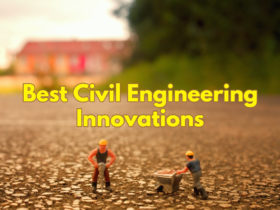
Latest innovations in civil engineering and construction industry

Civil Engineering: The Hardest Engineering Degree?
- Education & Career 34
- Industry 24
- Technology 18
GET OUR APP

Engineering Resources
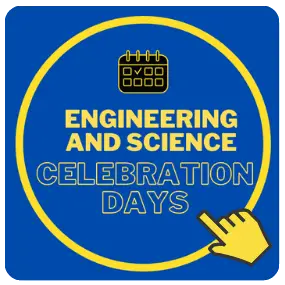
Everything you need to know about National Space Day

Is Electrical Engineering Hard? Here’s What You Need to Know

Engineer's Planet
Mtech, Btech Projects, PhD Thesis and Research Paper Writing Services in Delhi
Exploring the engineering mindset: Problem solving strategies.
Students, engineers and other people often use problem-solving and problem-solving strategies almost every day in their life. They are introduced to problem-solving by demonstrating real-life applications and finding their solutions. These problem-solving strategies provide a rather systematic procedure to solve a problem that is efficient as well as gives a logical flow and makes them understand it well.
Exploring engineering mindset
Let’s look at some problem-solving strategies that make it easier for engineers to explore, understand and effortlessly solve the problem.
Defining the problem
For any given problem it must be very important to figure out and define the problem well. Collaboratively defining a problem will help engineering students understand the given problem well. Problem-defining or identifying is extremely difficult but also a very essential step.
It involves focusing on the real problem after diagnosing the situation. Identifying the problem makes it easier to list the possible solution, and also in turn saves our time, extra effort and money. Every engineering student should master defining a problem, and this needs a lot of patience and practice.
Furthermore, how a student frames his/her problem will assist their search for a possible solution.
Listing all the possible solutions –
Once, the problem is well understood and defined, the next step is to list all the possible solutions. By listing and brainstorming viable, possible and as many solutions as possible you can assist yourself effortlessly to find the ideal solution.
It is important to consider many suggestions provided while brainstorming for ideas as well as the information you’ve learned while analyzing the data. Some other things that help while listing all the possible solutions are receiving help from mentors, peers and teachers because they might have some more solutions that you might have not thought of.
Evaluating the listed solution
After creating a list of all the possible solutions, evaluate the list and understand which of that solutions will be the most feasible.
To make that part of the step easier you can, also speculate the positive and negative impact of each listed solution. Then once that part is done compare and analyze the report. You’ll be able to apprehend which of the following listed solutions is the most attainable one.
Make sure the selected solution does not have any loopholes. So that it can be implemented simply, efficiently and is also very practical.
Developing a plan for the most feasible solution
Once we have a practical and simple solution that will help you solve the problem, develop a plan for the same. It is significant to find a way to work around the solution, this makes our work a lot more uncomplicated.
The plan to solve the problem using the obtained solution should be smart, attainable, and relevant. The chosen strategy must be hassle-free to work with, no matter how new the problem and its concept are.
Re-checking the strategy chosen for solving the problem
It is very necessary to recheck the strategy we have chosen to solve our problem. It helps in more than one way like avoiding doing extra work, and ensuring we are using the correct strategy etc. Even if we are very confident about our strategy just confirming and rechecking proves beneficial.
As Camay said, ‘Check, double check, recheck’; so it is always better to do so. Students often ignore this step but sometimes this might disrupt the flow in later steps if the chosen strategy does not work out as we thought. Or maybe it turns out to be difficult to implement.
Once, we recheck we will be confident since that will reduce the chances of any further difficulty and then we can move on to the next step which is implementing the solution.
Implementing the solution
Now, after being done with all the above steps we finally get a good strategy for our problem. Hence, we can now implement the solution.
It is essential to be careful while executing the solution. Small things like paying attention to details, and the completion of all the work are also significant. Also while implementing the solution do keep a check on the action and analyze it well. How we carry out the solution will put an impact on the result we get.
After we complete this step, we can then move to the last step.
Checking the result
Once we implement the solution, we need to evaluate and check our results. Checking how effective the strategy was. Also, check if the current strategy solves the problem well or if the existing plan needs to be revised. Or maybe we need a new and better plan.
Since we have already rechecked our solution earlier there is a very chance to make any changes. But if you are not satisfied with the current strategy and its outcome you can still repeat from step two. So, that you can get the best possible strategy giving us the best solution.
Even though we do problem-solving almost every day it can sometimes it can be a little difficult. Easy problems can be solved easily without much use of the above-listed steps.
But for engineering students, mostly the problem they have to solve academically or in college life could turn out to be difficult. As well as something that needs good planning. In such cases, the above given described steps could be very useful.
This will help the mind of the students to be at peace and with less stress. So try using it for one of the problems and see if it helps.
Leave a Reply Cancel reply
This site uses Akismet to reduce spam. Learn how your comment data is processed .

FREE K-12 standards-aligned STEM
curriculum for educators everywhere!
Find more at TeachEngineering.org .
- TeachEngineering
- Solving Everyday Problems Using the Engineering Design Cycle
Hands-on Activity Solving Everyday Problems Using the Engineering Design Cycle
Grade Level: 7 (6-8)
(two 60-minutes class periods)
Additional materials are required if the optional design/build activity extension is conducted.
Group Size: 4
Activity Dependency: None
Subject Areas: Science and Technology
NGSS Performance Expectations:

TE Newsletter
Engineering connection, learning objectives, materials list, worksheets and attachments, introduction/motivation, vocabulary/definitions, investigating questions, activity extensions, user comments & tips.
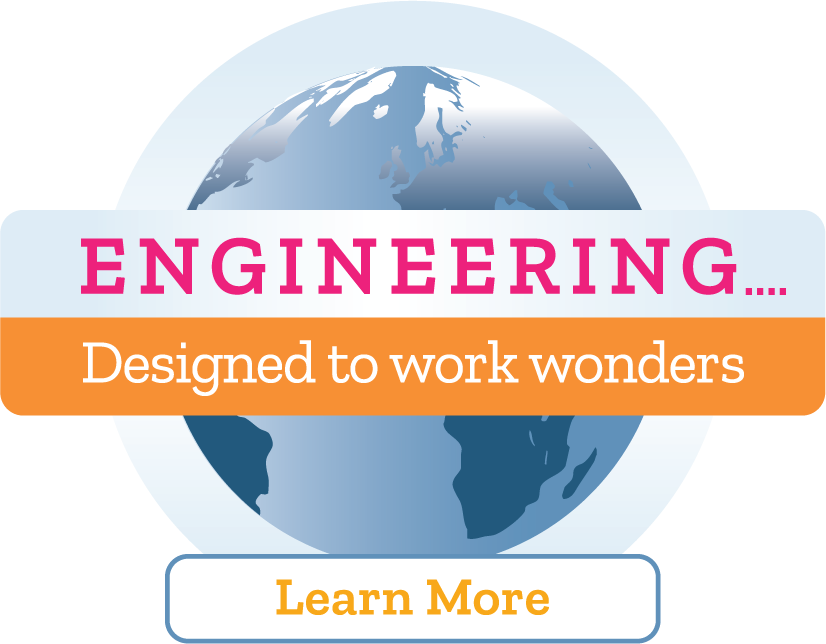
This activity introduces students to the steps of the engineering design process. Engineers use the engineering design process when brainstorming solutions to real-life problems; they develop these solutions by testing and redesigning prototypes that work within given constraints. For example, biomedical engineers who design new pacemakers are challenged to create devices that help to control the heart while being small enough to enable patients to move around in their daily lives.
After this activity, students should be able to:
- Explain the stages/steps of the engineering design process .
- Identify the engineering design process steps in a case study of a design/build example solution.
- Determine whether a design solution meets the project criteria and constraints.
- Think of daily life situations/problems that could be improved.
- Apply the engineering design process steps to develop their own innovations to real-life problems.
- Apply the engineering design cycle steps to future engineering assignments.
Educational Standards Each TeachEngineering lesson or activity is correlated to one or more K-12 science, technology, engineering or math (STEM) educational standards. All 100,000+ K-12 STEM standards covered in TeachEngineering are collected, maintained and packaged by the Achievement Standards Network (ASN) , a project of D2L (www.achievementstandards.org). In the ASN, standards are hierarchically structured: first by source; e.g. , by state; within source by type; e.g. , science or mathematics; within type by subtype, then by grade, etc .
Ngss: next generation science standards - science, international technology and engineering educators association - technology.
View aligned curriculum
Do you agree with this alignment? Thanks for your feedback!
State Standards
Massachusetts - science.
Each group needs:
- Marisol Case Study , one per student
- Group Leader Discussion Sheet , one per group
To share with the entire class:
- computer/projector setup to show the class the Introduction to the Engineering Design Cycle Presentation , a Microsoft® PowerPoint® file
- paper and pencils
- (optional) an assortment of scrap materials such as fabric, super glue, wood, paper, plastic, etc., provided by the teacher and/or contributed by students, to conduct the hands-on design/build extension activity
(Have the 19-slide Introduction to the Engineering Design Cycle Presentation , a PowerPoint® file, ready to show the class.)
Have you ever experienced a problem and wanted a solution to it? Maybe it was a broken backpack strap, a bookshelf that just kept falling over, or stuff spilling out of your closet? (Let students share some simple problems with the class). With a little bit of creativity and a good understanding of the engineering design process, you can find the solutions to many of these problems yourself!
But what is the engineering design process? (Listen to some student ideas shared with the class.) The engineering design process, or cycle, is a series of steps used by engineers to guide them as they solve problems.
(Show students the slide presentation. Refer to the notes under each slide for a suggested script and comments. The slides introduce the main steps of the engineering design process, and walk through a classroom problem—a teacher’s disorganized desk that is preventing timely return of graded papers—and how students devise a solution. It also describes the work of famous people—Katherine Johnson, Lee Anne Walters, Marc Edwards, James E. West and Jorge Odón—to illustrate successful examples of using the steps of the engineering design process.)
Now that we’ve explore the engineering design process, let’s see if we can solve a real-world problem. Marisol is a high-school student who is very excited to have their own locker. They have lots of books, assignments, papers and other items that they keep in their locker. However, Marisol is not very organized. Sometimes they are late to class because they need extra time to find things that were stuffed into their locker. What is Marisol’s problem? (Answer: Their locker is disorganized.) In your groups, you’ll read through Marisol’s situation and see how they use the engineering design process to solve it. Let’s get started!
This activity is intended as an introduction to the engineering design cycle. It is meant to be relatable to students and serve as a jumping off point for future engineering design work.
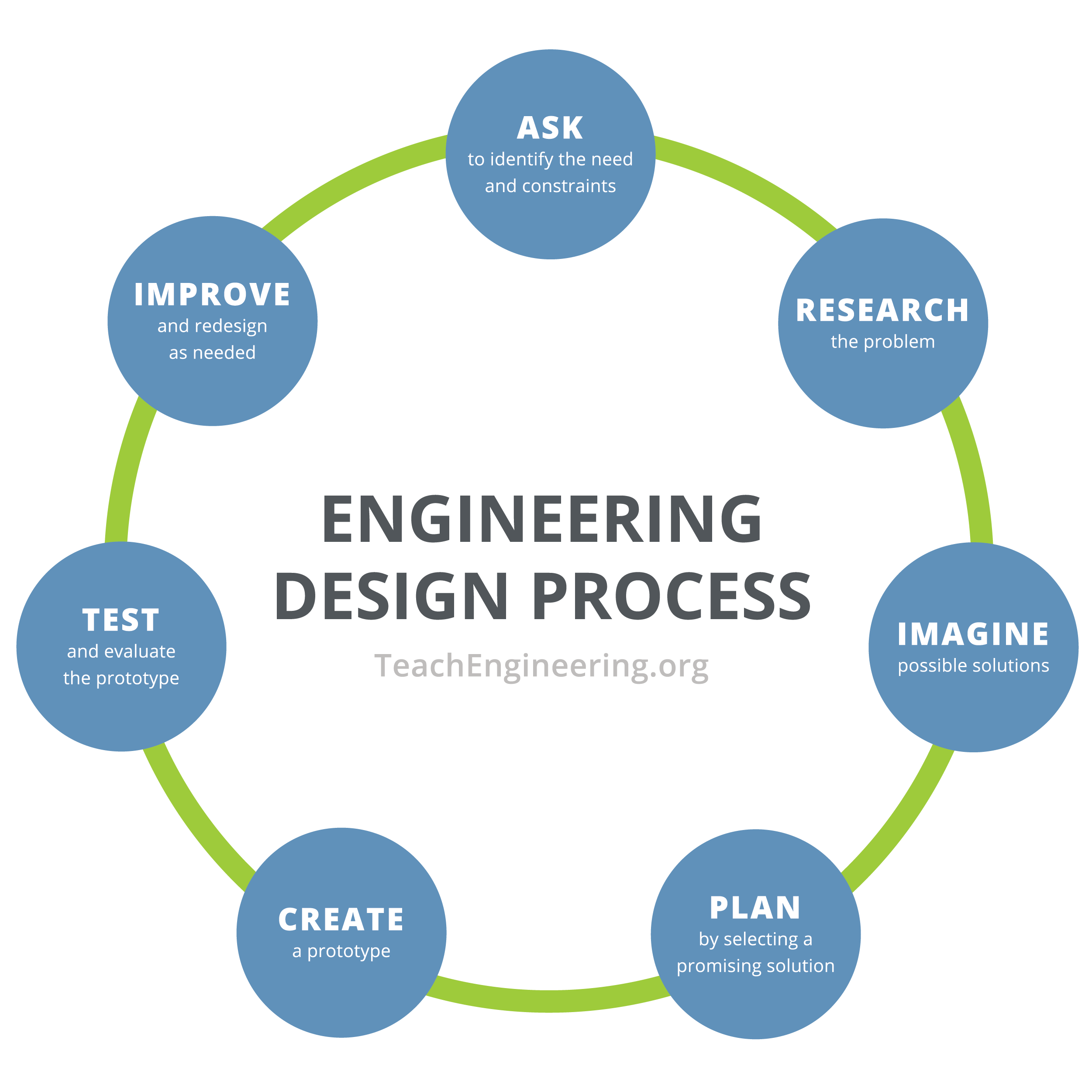
Engineers follow the steps of the engineering design process to guide them as they solve problems. The steps shown in Figure 1 are:
Ask: identify the need & constraints
- Identify and define the problem. Who does the problem affect? What needs to be accomplished? What is the overall goal of the project?
- Identify the criteria and constraints. The criteria are the requirements the solution must meet, such as designing a bag to hold at least 10 lbs. Constraints are the limitations and restrictions on a solution, such as a maximum budget or specific dimensions.
Research the problem
- Learn everything you can about the problem. Talk to experts and/or research what products or solutions already exist.
- If working for a client, such as designing new filters for a drinking water treatment plant, talk with the client to determine the needs and wants.
Imagine: develop possible solutions
- Brainstorm ideas and come up with as many solutions as possible. Wild and crazy ideas are welcome! Encourage teamwork and building on ideas.
Plan: select a promising solution
- Consider the pros and cons of all possible solutions, keeping in mind the criteria and constraints.
- Choose one solution and make a plan to move forward with it.
Create: build a prototype
- Create your chosen solution! Push for creativity, imagination and excellence in the design.
Test and evaluate prototype
- Test out the solution to see how well it works. Does it meet all the criteria and solve the need? Does it stay within the constraints? Talk about what worked during testing and what didn’t work. Communicate the results and get feedback. What could be improved?
Improve: redesign as needed
- Optimize the solution. Redesign parts that didn’t work, and test again.
- Iterate! Engineers improve their ideas and designs many times as they work towards a solution.
Some depictions of the engineering design process delineate a separate step—communication. In the Figure 1 graphic, communication is considered to be incorporated throughout the process. For this activity, we call out a final step— communicate the solution —as a concluding stage to explain to others how the solution was designed, why it is useful, and how they might benefit from it. See the diagram on slide 3.
For another introductory overview of engineering and design, see the What Is Engineering? What Is Design? lesson and/or show students the What Is Engineering? video.
Before the Activity
- Make copies of the five-page Marisol Case Study , one per student, and the Group Leader Discussion Sheet , one per group.
- Be ready to show the class the Introduction to the Engineering Design Cycle Presentation , a PowerPoint® file.
With the Students
- As a pre-activity assessment, spend a few minutes asking students the questions provided in the Assessment section.
- Present the Introduction/Motivation content to the class, which includes using the slide presentation to introduce students to the engineering design cycle. Throughout, ask for their feedback, for example, any criteria or constraints that they would add, other design ideas or modifications, and so forth.
- Divide the class into groups of four. Ask each team to elect a group leader. Hand out the case study packets to each student. Provide each group leader with a discussion sheet.
- In their groups, have students work through the case study together.
- Alert students to the case study layout with its clearly labeled “stop” points, and direct them to just read section by section, not reading beyond those points.
- Suggest that students either taking turns reading each section aloud or read each section silently.
- Once all students in a group have read a section, the group leader refers to the discussion sheet and asks its questions of the group, facilitating a discussion that involves every student.
- Encourage students to annotate the case study as they like; for example, they might note in the margins Marisol’s stage in the design process at various points.
- As students work in their groups, walk around the classroom and encourage group discussion. Ensure that each group member contributes to the discussion and that group members are focused on the same section (no reading ahead).
- After all teams have finished the case study and its discussion questions, facilitate a class discussion about how Marisol used the engineering design cycle. This might include referring back to questions 4 and 5 in “Stop 5” to discuss remaining questions about the case study and relate the case study example back to the community problems students suggested in the pre-activity assessment.
- Administer the post-activity assessment.
brainstorming: A team creativity activity with the purpose to generate a large number of potential solutions to a design challenge.
constraint: A limitation or restriction. For engineers, design constraints are the requirements and limitations that the final design solutions must meet. Constraints are part of identifying and defining a problem, the first stage of the engineering design cycle.
criteria: For engineers, the specifications and requirements design solutions must meet. Criteria are part of identifying and defining a problem, the first stage of the engineering design cycle.
develop : In the engineering design cycle, to create different solutions to an engineering problem.
engineering: Creating new things for the benefit of humanity and our world. Designing and building products, structures, machines and systems that solve problems. The “E” in STEM.
engineering design process: A series of steps used by engineering teams to guide them as they develop new solutions, products or systems. The process is cyclical and iterative. Also called the engineering design cycle.
evaluate: To assess something (such as a design solution) and form an idea about its merit or value (such as whether it meets project criteria and constraints).
optimize: To make the solution better after testing. Part of the engineering design cycle.
Pre-Activity Assessment
Intro Discussion: To gauge how much students already know about the activity topic and start students thinking about potential design problems in their everyday lives, facilitate a brief class discussion by asking students the following questions:
- What do engineers do? (Example possible answers: Engineers design things that help people, they design/build/create new things, they work on computers, they solve problems, they create things that have never existed before, etc.)
- What are some problems in your home, school or community that could be solved through engineering? (Example possible answers: It is too dark in a community field/park at night, it is hard to carry shopping bags in grocery store carts, the dishwasher does not clean the dishes well, we spend too much time trying to find shoes—or other items—in the house/garage/classroom, etc.)
- How do engineers solve problems? (Example possible answers: They build new things, design new things, etc. If not mentioned, introduce students to the idea of the engineering design cycle. Liken this to how research scientists are guided by the steps of the scientific method.)
Activity Embedded Assessment
Small Group Discussions: As students work, observe their group discussions. Make sure the group leaders go through all the questions for each section, and that each group member contributes to the discussions.
Post-Activity Assessment
Marisol’s Design Process: Provide students with writing paper and have them write “Marisol’s Design Process” at the top. Direct them to clearly write out the steps that Marisol went through as they designed and completed their locker organizer design and label them according to where they fit in the engineering design cycle. For example, “Marisol had to jump back to avoid objects falling out of their locker” and they stated a desire to “wanted to find a way to organize their locker” both illustrate the “identifying the problem” step.
- Which part of the engineering design cycle is Marisol working on as they design an organizer?
- Why is it important to identify the criteria and constraints of a project before building and testing a prototype? (Example possible answers: So that the prototype will be the right size, so that you do not go over budget, so that it will solve the problem, etc.)
- Why do engineers improve and optimize their designs? (Example possible answers: To make it work better, to fix unexpected problems that come up during testing, etc.)
To make this a more hands-on activity, have students design and build their own locker organizers (or other solutions to real-life problems they identified) in tandem with the above-described activity, incorporating the following changes/additions to the process:
- Before the activity: Inform students that they will be undertaking an engineering design challenge. Without handing out the case study packet, introduce students to Marisol’s problem: a disorganized locker. Ask students to bring materials from home that they think could help solve this problem. Then, gather assorted materials (wood and fabric scraps, craft materials, tape, glue, etc.) to provide for this challenge, giving each material a cost (for example, wood pieces cost 50¢, fabric costs 25¢, etc.) and write these on the board or on paper to hand out to the class.
- Present the Introduction/Motivation content and slides to introduce students to the engineering design process (as described above). Then have students go through the steps of the engineering design process to create a locker organizer for Marisol. Inform them Marisol has only $3 to spend on an organizer, so they must work within this budget constraint. As a size constraint, tell students the locker is 32 inches tall, 12 inches wide and 9.5 inches deep. (Alternatively, have students measure their own lockers and determine the size themselves.)
- As students work, ask them some reflection questions such as, “Which step of the engineering design process are you working on?” and “Why have you chosen that solution?”
- Let groups present their organizers to the class and explain the logic behind their designs.
- Next, distribute the case study packet and discussion sheets to the student groups. As the teams read through the packet, encourage them to discuss the differences between their design solutions and Marisol’s. Mention that in engineering design there is no one right answer; rather, many possible solutions may exist. Multiple designs may be successful in imagining and fabricating a solution that meets the project criteria and constraints.
Engineering Design Process . 2014. TeachEngineering, Web. Accessed June 20, 2017. https://www.teachengineering.org/k12engineering/designprocess
Contributors
Supporting program, acknowledgements.
This material is based upon work supported by the National Science Foundation CAREER award grant no. DRL 1552567 (Amy Wilson-Lopez) titled, Examining Factors that Foster Low-Income Latino Middle School Students' Engineering Design Thinking in Literacy-Infused Technology and Engineering Classrooms. Any opinions, findings, and conclusions or recommendations expressed in this material are those of the authors and do not necessarily reflect the views of the National Science Foundation.
Last modified: October 26, 2023
Welcome to the Wayne G. Basler Library at Northeast State Community College

ENGR 1210 - Intro To Engineering
- What is Engineering?
- Engineering as a Profession
Engineering Problem Solving
- Engineering Ethics
- Types of Engineering
- Engineering Education
- Designing Your Search Strategy
- Getting Help
- Reading Ideas
- Engineering Problem Solving From an Open Source Engineering Textbook
- << Previous: Engineering as a Profession
- Next: Engineering Ethics >>
- Last Updated: Apr 1, 2024 8:39 AM
- URL: https://library.northeaststate.edu/ENGR1210

Learn Engineering & Technology
Methods to Solve Any Engineering Problem
In our day to day life we came across various engineering problems. Once we face these engineering problems few questions will come in our mind like How to resolve it? What are different methods? Which is the simplest or best method?
In this paragraphs, we will discuss various methods to solve any engineering problems & their comparison with each other. There are three basic methods to solve any engineering methods.
- Analytical Methods
- Numerical Methods
- Experimental methods
1. Analytical Methods:
The analytical method is most widely used in curriculum study as well as used by industrial designers to solve the engineering problems. It is a classical approach which gives 100 % accurate results. This approach is also referred to as hand calculations; as in this method various mathematical equations & functions are used to find output variables & derive closed form solutions. This method is mainly applicable for simpler problems like cantilever and simply supported fixed beams, etc.
Though the analytical approach is 100 % accurate, it could also give approximate results if the solution is not closed form. An equation is said to be a closed-form solution if it solves a given problem in terms of mathematical operations & functions from a given generally accepted set. For example, an infinite sum would generally not be considered closed-form.
2. Numerical Method:
When we come across more complex problems, in which both analytical and experimental methods do not work, numerical methods are driving the solutions. CAE engineers or analysts most widely use numerical methods to solve their engineering problems. This numerical method uses computational techniques through simulation software’s & large infrastructures, etc. Numerical methods do not need physical models or prototypes, it builds mathematical models to replicate real life complex problems and while doing so, several assumptions were made to simulate the analysis. Therefore, the results from this method are approximate. So, you cannot believe the results blindly and hence, sometimes sanity checks are needed to validate the simulation either by hand calculations or by physical testing, etc.
The four common numerical methods used to solve engineering problems are:
- The Finite Element Method (FEM) is a popular numerical technique used to determine the approximated solution for a partial differential equation (PDE).
- Applications : Linear, nonlinear, buckling, thermal, dynamic, and fatigue analysis
- Powerful and efficient technique to solve acoustics or NVH problems. Just like FEA, it also requires nodes and elements, but it only considers the outer boundary of the domain. So when the problem is of a volume, only the outer surfaces are considered. Similarly if the domain is of an area, then only the outer periphery is considered. By doing so it reduces the dimensionality of the problems by one degree resulting in faster problem solving. BEM is often more efficient than other methods in terms of computational resources for problems where there is a small surface or volume ratio.
- Applications : Acoustics, NVH
- The FVM method representing and evaluating partial differential equations as an algebraic equations method is used in many computational fluid dynamics packages. It is very similar to FDM, where the values are calculated at discrete volumes on a generic geometry. The advantage of this method is that it is easily formulated to allow for unstructured meshes.
- Applications : CFD (Computational Fluid Dynamics) and Computational Electromagnetic
- It uses Taylor’s series to convert a differential equation to an algebraic equation. In the conversion process, higher order terms are neglected.
- It is used in combination with BEM or FVM to solve thermal and CFD coupled problems.
Can we solve the same problem with all Numerical methods? The answer is YES, but substantial differences exist between this method in terms of accuracy, ease of programming & computational time, etc.
3. Experimental Method:
Experimental method is also known as physical testing. It is one of the most reliable methods and widely used in industry for product prototype testing.
In this method, the product or component is tested in real time operating conditions & actual measurement were reported. So in order to use this method, you will need a physical prototype of the product or structure you want to be analyzed. Only one prototype testing is not sufficient, for final outcome of analysis 3 to 5 prototype testing is required. Due to this, the experimental method is time consuming, requires expensive physical setup which results in additional cost rather than actual products.
Physical testing is performed with the help of various measuring equipment like strain gauges, different sensors, measuring devices like accelerators, etc. to calculate various parameters of the experiment. Examples: Compressor manufacturers are doing prototype testing to mitigate the vibration levels on prototypes. Here, different accelerators are placed at various point on prototype and acceleration levels are measured for operational loads.


Below images shows the simple cantilever beam problems solution by three different methods approach.
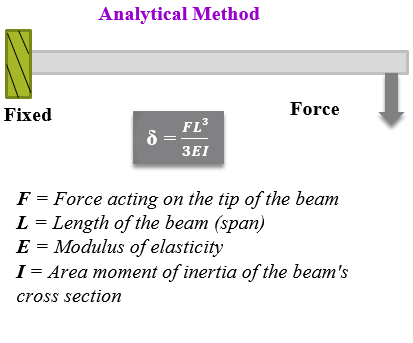
- Master of Engineering
- MS in Biomedical Engineering
- MS in Mechanical Engineering
- MS in Systems & Control Engineering
- State Authorization
- Technology Requirements
- Tuition and Financial Aid
- Class Profile
- Online Experience
7 Surprising Ways Engineering Has Solved Everyday Problems
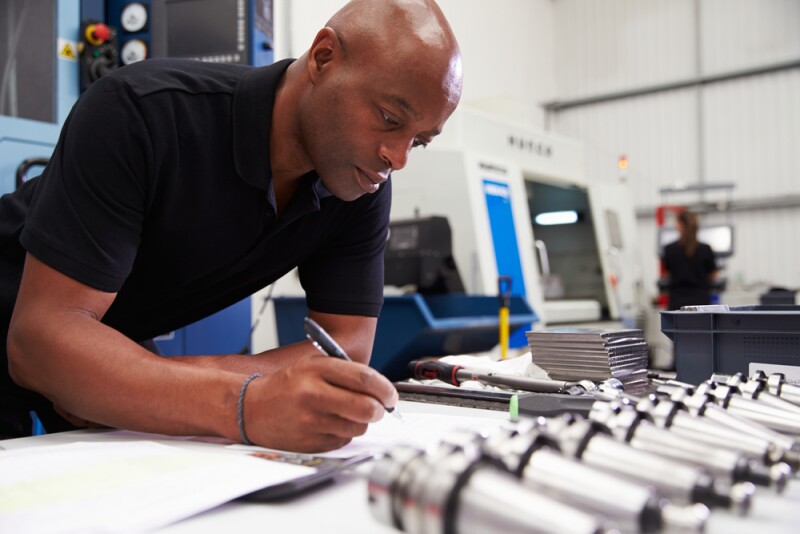
In a culture where hacking and repurposing are commonplace, engineering-minded designers transform everyday items into innovative solutions. By following design-cycle steps, they turn science fiction into reality, addressing pervasive everyday problems. This post explores real-world challenges, showcasing the transformative power of engineering solutions—from the coffee cup sleeve to the selfie stick and beyond. Consider inventive creations that improve accessibility and tackle health issues. Discover the limitless potential of engineering expertise to address contemporary challenges and improve lives.
Expertise to Create the Unexpected
We live in a hacking culture where we break down and repurpose everything from IKEA furniture to power tools, redesigning them to fill a need or solve a problem for which they were not originally intended. By applying some of the basic design-cycle steps of Ask, Research, Imagine, Plan, Create, Test and Improve, engineering-minded product designers are turning what might have once been considered science fictional solutions into reality.
By sharpening your engineering skill set , you can put yourself in a unique position to address some pervasive everyday problems. Which would you like to take on? For a little inspiration, take a look at some real-world everyday challenges, big and small, that have been alleviated by some rather innovative engineering solutions.
Squeezing Out the Last Drop of Liquid
We’ve all experienced the frustration of attempting to squeeze the last drop of ketchup or toothpaste from their containers. That could end very soon, all thanks to a unique slippery coating that keeps thick, gooey substances from sticking to solid surfaces.
Called LiquiGlide, this material was initially was created to line oil and gas pipelines to protect against buildup. 1 It worked so well that the team developing this technology at MIT decided to explore other commercial applications for it. They researched and tested different combinations of materials to create new variations of LiquiGlide, including food-grade and medical-grade versions. These can help reduce product waste and enable viscous liquid medications to efficiently empty from tubes to improve proper dosing.
Holding Hot Coffee Without Spilling It
The coffee cup sleeve: With such deceptively simple design and such obvious value, it’s hard to believe it wasn’t invented sooner than it was, back in 1991. The idea was born two years prior, when piping hot coffee in a paper to-go cup burned the hands (and subsequently spilled on the lap) of future Java Jacket founder Jay Sorensen.
Sorensen did considerable research on the potential market demand for such a product, the kinds of materials that could be used to cost-effectively create it and the most successful physical design. He produced and tested several iterations of the sleeve before landing on the prototype that is still used today. 2 Now, the nearly ubiquitous coffee cup sleeves are helping save the fingers (and laps) of countless hot-java-drinking commuters—not to mention engineers.
A Far-Reaching Solution for Getting the Group Shot
By freeing us from having to rely on a willing passerby to take a group photo in front of a tourist attraction or a silhouette shot against a stunning sunset, the selfie stick has certainly made an impact in today’s social-media-savvy world.
Wayne Fromm didn’t invent camera-on-a-stick technology, but in 2005 he did patent a version that could hold almost any camera and, eventually, nearly any smartphone. 3 That’s the version that began to resonate with consumers worldwide.
Since then, the original selfie stick concept has evolved into several iterations by Fromm and other manufacturers to answer the demand for more uses—including ones that extend telescopically at the push of a button so you can fit more people or more background into your shot, that allow you to snap a shot via Bluetooth without needing to set the camera timer, or that take blur-free photographs and video while skydiving or partaking in other action sports.
Walking Your Way to Health at Work
Dr. James Levine, a medical doctor who researches obesity, found that sitting for several hours at a time negatively impacts our health much more than initially thought, even for those who regularly go to the gym. He argued that our increasingly sedentary lifestyle, fueled by demands at work requiring us to be at our desks, has contributed to a culture of people with poor posture, lack of energy, and increased risk of heart disease and diabetes.
Levine came up with a rather unusual solution: He rigged a used treadmill under a raised bedside tray. 4 Perhaps this prototype he created in 1999 wasn’t the most attractive setup, but its goal was clear: to give people a way to be active while working and help reduce sitting-related health risks.
Levine worked with a manufacturer to produce the first official treadmill desk, released in 2007. Today, many companies promoting a healthier workplace offer employees the option to have such a desk instead of a traditional one.
Overcoming Fear of Public Speaking
Sophia Velastegui, an influential engineer in the technology sector, applied several engineering design steps early in her career to conquer a common phobia: speaking in front of a crowd. 5
Velastegui did this by:
- Identifying specific problems to address: her shyness and fear of public speaking
- Looking into ways to work on them (such as volunteering to speak at company meetings)
- Setting up a plan of action to overcome her shyness with strangers: research people to meet at conferences, contact them, choose discussion topics and maintain regular contact
- Continuing to improve her speaking and networking skills through constant practice
Velastegui’s process improved her public speaking—and her confidence and management skills—so thoroughly that it has been invaluable to her rise through desirable positions at top companies. Not only that, she was named to Business Insider's list of most powerful female engineers in 2017.
Eating With Confidence, Without Spilling
Many of us take the simple act of feeding ourselves for granted. But for anyone with trembling hands, it can be a frustrating struggle to keep food on a fork or spoon long enough to reach their mouth without it winding up on the table or their clothing. Liftware Level™ utensils were created by inventors with loved ones experiencing such limitations.
Liftware uses sensor technology that makes real-time adjustments to accommodate any mild-to-severe shaking and trembling movements. 6 This improves accessibility and independence for those suffering from conditions such as Parkinson’s disease.
Liftware developers are taking their testing to a new level: They created an app that records motion data using an accelerometer sensor found in smartphones. They use this data when creating prototypes for versions of other common products that can be used by people with disabilities.
Diagnosing Deep Gastrointestinal Diseases
In 1981, inspired by a friend experiencing small intestine pain with no apparent source, rocket engineer Gavriel Iddan wondered if there was a way to create a “missile”—complete with a camera—that could be launched into the intestine to snap photographs in order to help physicians make accurate diagnoses.
Applying his knowledge of rocket engineering to a completely unrelated problem led to his invention of the ingestible camera. “PillCam” actually took 17 years to become reality, thanks to Iddan’s diligence and the development of micro cameras, transmitters and LED lights that could fit into a large pill-sized capsule. 7
Now the diagnostic standard, doctors can properly identify conditions that are deep in the digestive tract, areas previously unreachable by other nonsurgical methods.
Put Your Engineering Skills to Use
The world is full of countless challenges waiting for that one solution to be created or tweaked that can make life just a little easier, healthier or better. What problems are you planning on tackling with an engineering approach? What inefficiencies are you improving? And better yet, how many more opportunities might present themselves as you continue to hone your engineering expertise?
Using your engineering knowledge, there’s no limit to what you can do. Explore our online graduate engineering degree programs at Case Western Reserve University to get started improving the world around you today.
- Retrieved on September 8, 2018, from liquiglide.com/
- Retrieved on September 8, 2018, from smithsonianmag.com/arts-culture/how-the-coffee-cup-sleeve-was-invented-119479/
- Retrieved on September 8, 2018, from businessinsider.com/wayne-fromm-is-the-inventor-of-the-modern-selfie-stick-2015-8
- Retrieved on September 8, 2018, from newyorker.com/magazine/2013/05/20/the-walking-alive
- Retrieved on September 8, 2018, from businessinsider.com/how-this-engineer-hacked-her-career-and-became-a-gm-at-microsoft-2018-2
- Retrieved on September 8, 2018, from launchforth.io/blog/post/invention-spotlight-liftware-level/2335/
- Retrieved on September 8, 2018, from epo.org/learning-events/european-inventor/finalists/2011/iddan/impact.html
Return to Online Engineering Blog
Complete the form below before proceeding to the application portal.
Case Western Reserve University has engaged Everspring , a leading provider of education and technology services, to support select aspects of program delivery.
- Engineering
The Partner of Choice for Engineers Across the Globe

SOLUTION TOPICS
Quality engineering, process engineering, chemical engineering, biomedical engineering, electrical engineering, reliability engineering, mechanical engineering, solutions built for engineers.
Minitab provides a multitude of solutions for engineers to aid in problem solving and analytics. Attack problems with brainstorming tools, plan projects and process improvements through visual tools, and then collect data and analyze it, all within the Minitab ecosystem. Our solutions can help you find the answers you need using graphical tools, statistics, and predictive analytics.

For quality professionals, it is crucial to quickly and clearly identify the root cause when customers are experiencing problems with services or products. Minitab is the ideal partner for quality professionals who want to take on additional projects, or lead the development of a formal continuous improvement or operational excellence program.

Watch the webinar to explore a step-by-step project roadmap to effectively investigate, improve, and maintain a process.
Process engineers need to understand their processes. Minitab is the expert in process improvement, with solutions designed to identify areas of improvement, measure processes outcomes, and monitor them. See an example of how Minitab can help with capability statistics that tell you how well your process is meeting the specifications that you have.

Statistics plays a big role in all engineering professions and has become even more important for chemical engineers. Because of the proliferation of inexpensive instrumentation, an engineer working in a modern plant has access to a tremendous amount of data. As a result, chemical engineers are dealing with more, and more complex, data than ever before. Learning data analysis and data science skills will enable you to provide unique and in-depth insights from your data that can create significant value for your organization today.

Applying the principles of biology, medicine, and engineering create life-saving solutions. That’s why Minitab works closely with biomedical engineers to ensure they are creating the safest and highest quality products. Learn how Boston Scientific leveraged Minitab solutions to improve manufacturing and as a result, drove significant savings.

Minitab provides solutions to enable electrical engineers to design, develop, test, and supervise the manufacture of electrical equipment. With different analytical and problem-solving tools, Minitab is the partner of choice for electrical engineers. Learn more about how one electronics maker used one of Minitab’s tools to find better specifications for suppliers and realize significant cost savings.

Imagine your new car breaks down after driving 60 miles. The engine light turns on and your vehicle must now be towed to be serviced. This is not only a warranty issue but also a field problem, due to lack of product reliability. Minitab partners with engineers to both optimize the design of products and ensure reliability to prevent this happening to you.

Mechanical engineers work on a wide range of projects from creating detailed designs to conducting simulations and analyses. Mechanical engineers must not only collaborate with multidisciplinary teams to ensure projects are completed successfully and on schedule, but they also play a key role in troubleshooting and resolving technical issues, conducting research, and improving mechanical systems and devices. Minitab provides mechanical engineers the broadest solutions and resources needed to perform their duties better, faster and easier.

The Partner of Choice for Engineers Around the Globe
When there is a problem, engineers are tasked to solve it. As if that isn’t challenging enough, working without proper tools and solutions makes problem-solving more difficult. To truly be successful, engineers need access to data, solutions to integrate and analyze it, project management skills, and templates to improve the process and ensure continuous improvement.
That’s why Minitab created an ecosystem that tackles problem-solving the way engineers do. Need structured problem-solving tools to brainstorm? Check! Want to standardize forms like FMEAs, PPAP, or House of Quality? We have them! Looking to pull data from different sources to analyze on one platform? You’ve come to the right place!
Whether you’re an engineer in quality or process improvement, or in product development, we understand the day-to-day challenges of properly designing and testing. That’s because we’ve been doing it for over 50 years. We provide solutions to collect, monitor, and measure data with an eye toward improvement. Plus, with our services, training, and education, we can help you do your job better and even expand your skillset. We can help solve your problems, so that you can solve them for your organization.
OUR CUSTOMERS
“Minitab [is] the best tool for quality management. I use Minitab to run time series plots, charts, and control charts, as well as Pareto charts, fish bone charts…all the quality data was presented to upper management using Minitab. I would recommend it without hesitation!”
Jose Luis P. Quality Chief
“I deal with a few projects at a time and Minitab really helps me in understanding the failure points and relations within sub activities of a process. I can do a better root cause analysis to find the origin of a problem and also use the FMEA tool to weigh the severity, occurrence, and detection. I can tell with confidence that we have saved a whole lot of time compared to the hours of discussions and calculations we would have spent if we didn't invest in this software. The efficiency of our team has gone up significantly.”
Rahul V. Senior Development Engineer

“Minitab has made it so easy to analyze [my] data... from creating graphs, statistical analysis, and forming reports, it is the best thing an engineer can ask for. You don't need to be an expert to use it.”
Maria M. Industrial & Manufacturing Engineer
- Trust Center
© 2024 Minitab, LLC. All Rights Reserved.
- Terms of Use
- Privacy Notice
- Cookie Settings
You are now leaving minitab.com.
Click Continue to proceed to:
Thank you for visiting nature.com. You are using a browser version with limited support for CSS. To obtain the best experience, we recommend you use a more up to date browser (or turn off compatibility mode in Internet Explorer). In the meantime, to ensure continued support, we are displaying the site without styles and JavaScript.
- View all journals
- My Account Login
- Explore content
- About the journal
- Publish with us
- Sign up for alerts
- Open access
- Published: 10 April 2024
A hybrid particle swarm optimization algorithm for solving engineering problem
- Jinwei Qiao 1 , 2 ,
- Guangyuan Wang 1 , 2 ,
- Zhi Yang 1 , 2 ,
- Xiaochuan Luo 3 ,
- Jun Chen 1 , 2 ,
- Kan Li 4 &
- Pengbo Liu 1 , 2
Scientific Reports volume 14 , Article number: 8357 ( 2024 ) Cite this article
Metrics details
- Computational science
- Mechanical engineering
To overcome the disadvantages of premature convergence and easy trapping into local optimum solutions, this paper proposes an improved particle swarm optimization algorithm (named NDWPSO algorithm) based on multiple hybrid strategies. Firstly, the elite opposition-based learning method is utilized to initialize the particle position matrix. Secondly, the dynamic inertial weight parameters are given to improve the global search speed in the early iterative phase. Thirdly, a new local optimal jump-out strategy is proposed to overcome the "premature" problem. Finally, the algorithm applies the spiral shrinkage search strategy from the whale optimization algorithm (WOA) and the Differential Evolution (DE) mutation strategy in the later iteration to accelerate the convergence speed. The NDWPSO is further compared with other 8 well-known nature-inspired algorithms (3 PSO variants and 5 other intelligent algorithms) on 23 benchmark test functions and three practical engineering problems. Simulation results prove that the NDWPSO algorithm obtains better results for all 49 sets of data than the other 3 PSO variants. Compared with 5 other intelligent algorithms, the NDWPSO obtains 69.2%, 84.6%, and 84.6% of the best results for the benchmark function ( \({f}_{1}-{f}_{13}\) ) with 3 kinds of dimensional spaces (Dim = 30,50,100) and 80% of the best optimal solutions for 10 fixed-multimodal benchmark functions. Also, the best design solutions are obtained by NDWPSO for all 3 classical practical engineering problems.
Introduction
In the ever-changing society, new optimization problems arise every moment, and they are distributed in various fields, such as automation control 1 , statistical physics 2 , security prevention and temperature prediction 3 , artificial intelligence 4 , and telecommunication technology 5 . Faced with a constant stream of practical engineering optimization problems, traditional solution methods gradually lose their efficiency and convenience, making it more and more expensive to solve the problems. Therefore, researchers have developed many metaheuristic algorithms and successfully applied them to the solution of optimization problems. Among them, Particle swarm optimization (PSO) algorithm 6 is one of the most widely used swarm intelligence algorithms.
However, the basic PSO has a simple operating principle and solves problems with high efficiency and good computational performance, but it suffers from the disadvantages of easily trapping in local optima and premature convergence. To improve the overall performance of the particle swarm algorithm, an improved particle swarm optimization algorithm is proposed by the multiple hybrid strategy in this paper. The improved PSO incorporates the search ideas of other intelligent algorithms (DE, WOA), so the improved algorithm proposed in this paper is named NDWPSO. The main improvement schemes are divided into the following 4 points: Firstly, a strategy of elite opposition-based learning is introduced into the particle population position initialization. A high-quality initialization matrix of population position can improve the convergence speed of the algorithm. Secondly, a dynamic weight methodology is adopted for the acceleration coefficients by combining the iterative map and linearly transformed method. This method utilizes the chaotic nature of the mapping function, the fast convergence capability of the dynamic weighting scheme, and the time-varying property of the acceleration coefficients. Thus, the global search and local search of the algorithm are balanced and the global search speed of the population is improved. Thirdly, a determination mechanism is set up to detect whether the algorithm falls into a local optimum. When the algorithm is “premature”, the population resets 40% of the position information to overcome the local optimum. Finally, the spiral shrinking mechanism combined with the DE/best/2 position mutation is used in the later iteration, which further improves the solution accuracy.
The structure of the paper is given as follows: Sect. “ Particle swarm optimization (PSO) ” describes the principle of the particle swarm algorithm. Section “ Improved particle swarm optimization algorithm ” shows the detailed improvement strategy and a comparison experiment of inertia weight is set up for the proposed NDWPSO. Section “ Experiment and discussion ” includes the experimental and result discussion sections on the performance of the improved algorithm. Section “ Conclusions and future works ” summarizes the main findings of this study.
Literature review
This section reviews some metaheuristic algorithms and other improved PSO algorithms. A simple discussion about recently proposed research studies is given.
Metaheuristic algorithms
A series of metaheuristic algorithms have been proposed in recent years by using various innovative approaches. For instance, Lin et al. 7 proposed a novel artificial bee colony algorithm (ABCLGII) in 2018 and compared ABCLGII with other outstanding ABC variants on 52 frequently used test functions. Abed-alguni et al. 8 proposed an exploratory cuckoo search (ECS) algorithm in 2021 and carried out several experiments to investigate the performance of ECS by 14 benchmark functions. Brajević 9 presented a novel shuffle-based artificial bee colony (SB-ABC) algorithm for solving integer programming and minimax problems in 2021. The experiments are tested on 7 integer programming problems and 10 minimax problems. In 2022, Khan et al. 10 proposed a non-deterministic meta-heuristic algorithm called Non-linear Activated Beetle Antennae Search (NABAS) for a non-convex tax-aware portfolio selection problem. Brajević et al. 11 proposed a hybridization of the sine cosine algorithm (HSCA) in 2022 to solve 15 complex structural and mechanical engineering design optimization problems. Abed-Alguni et al. 12 proposed an improved Salp Swarm Algorithm (ISSA) in 2022 for single-objective continuous optimization problems. A set of 14 standard benchmark functions was used to evaluate the performance of ISSA. In 2023, Nadimi et al. 13 proposed a binary starling murmuration optimization (BSMO) to select the effective features from different important diseases. In the same year, Nadimi et al. 14 systematically reviewed the last 5 years' developments of WOA and made a critical analysis of those WOA variants. In 2024, Fatahi et al. 15 proposed an Improved Binary Quantum-based Avian Navigation Optimizer Algorithm (IBQANA) for the Feature Subset Selection problem in the medical area. Experimental evaluation on 12 medical datasets demonstrates that IBQANA outperforms 7 established algorithms. Abed-alguni et al. 16 proposed an Improved Binary DJaya Algorithm (IBJA) to solve the Feature Selection problem in 2024. The IBJA’s performance was compared against 4 ML classifiers and 10 efficient optimization algorithms.
Improved PSO algorithms
Many researchers have constantly proposed some improved PSO algorithms to solve engineering problems in different fields. For instance, Yeh 17 proposed an improved particle swarm algorithm, which combines a new self-boundary search and a bivariate update mechanism, to solve the reliability redundancy allocation problem (RRAP) problem. Solomon et al. 18 designed a collaborative multi-group particle swarm algorithm with high parallelism that was used to test the adaptability of Graphics Processing Units (GPUs) in distributed computing environments. Mukhopadhyay and Banerjee 19 proposed a chaotic multi-group particle swarm optimization (CMS-PSO) to estimate the unknown parameters of an autonomous chaotic laser system. Duan et al. 20 designed an improved particle swarm algorithm with nonlinear adjustment of inertia weights to improve the coupling accuracy between laser diodes and single-mode fibers. Sun et al. 21 proposed a particle swarm optimization algorithm combined with non-Gaussian stochastic distribution for the optimal design of wind turbine blades. Based on a multiple swarm scheme, Liu et al. 22 proposed an improved particle swarm optimization algorithm to predict the temperatures of steel billets for the reheating furnace. In 2022, Gad 23 analyzed the existing 2140 papers on Swarm Intelligence between 2017 and 2019 and pointed out that the PSO algorithm still needs further research. In general, the improved methods can be classified into four categories:
Adjusting the distribution of algorithm parameters. Feng et al. 24 used a nonlinear adaptive method on inertia weights to balance local and global search and introduced asynchronously varying acceleration coefficients.
Changing the updating formula of the particle swarm position. Both papers 25 and 26 used chaotic mapping functions to update the inertia weight parameters and combined them with a dynamic weighting strategy to update the particle swarm positions. This improved approach enables the particle swarm algorithm to be equipped with fast convergence of performance.
The initialization of the swarm. Alsaidy and Abbood proposed 27 a hybrid task scheduling algorithm that replaced the random initialization of the meta-heuristic algorithm with the heuristic algorithms MCT-PSO and LJFP-PSO.
Combining with other intelligent algorithms: Liu et al. 28 introduced the differential evolution (DE) algorithm into PSO to increase the particle swarm as diversity and reduce the probability of the population falling into local optimum.
Particle swarm optimization (PSO)
The particle swarm optimization algorithm is a population intelligence algorithm for solving continuous and discrete optimization problems. It originated from the social behavior of individuals in bird and fish flocks 6 . The core of the PSO algorithm is that an individual particle identifies potential solutions by flight in a defined constraint space adjusts its exploration direction to approach the global optimal solution based on the shared information among the group, and finally solves the optimization problem. Each particle \(i\) includes two attributes: velocity vector \({V}_{i}=\left[{v}_{i1},{v}_{i2},{v}_{i3},{...,v}_{ij},{...,v}_{iD},\right]\) and position vector \({X}_{i}=[{x}_{i1},{x}_{i2},{x}_{i3},...,{x}_{ij},...,{x}_{iD}]\) . The velocity vector is used to modify the motion path of the swarm; the position vector represents a potential solution for the optimization problem. Here, \(j=\mathrm{1,2},\dots ,D\) , \(D\) represents the dimension of the constraint space. The equations for updating the velocity and position of the particle swarm are shown in Eqs. ( 1 ) and ( 2 ).
Here \({Pbest}_{i}^{k}\) represents the previous optimal position of the particle \(i\) , and \({Gbest}\) is the optimal position discovered by the whole population. \(i=\mathrm{1,2},\dots ,n\) , \(n\) denotes the size of the particle swarm. \({c}_{1}\) and \({c}_{2}\) are the acceleration constants, which are used to adjust the search step of the particle 29 . \({r}_{1}\) and \({r}_{2}\) are two random uniform values distributed in the range \([\mathrm{0,1}]\) , which are used to improve the randomness of the particle search. \(\omega\) inertia weight parameter, which is used to adjust the scale of the search range of the particle swarm 30 . The basic PSO sets the inertia weight parameter as a time-varying parameter to balance global exploration and local seeking. The updated equation of the inertia weight parameter is given as follows:
where \({\omega }_{max}\) and \({\omega }_{min}\) represent the upper and lower limits of the range of inertia weight parameter. \(k\) and \(Mk\) are the current iteration and maximum iteration.
Improved particle swarm optimization algorithm
According to the no free lunch theory 31 , it is known that no algorithm can solve every practical problem with high quality and efficiency for increasingly complex and diverse optimization problems. In this section, several improvement strategies are proposed to improve the search efficiency and overcome this shortcoming of the basic PSO algorithm.
Improvement strategies
The optimization strategies of the improved PSO algorithm are shown as follows:
The inertia weight parameter is updated by an improved chaotic variables method instead of a linear decreasing strategy. Chaotic mapping performs the whole search at a higher speed and is more resistant to falling into local optimal than the probability-dependent random search 32 . However, the population may result in that particles can easily fly out of the global optimum boundary. To ensure that the population can converge to the global optimum, an improved Iterative mapping is adopted and shown as follows:
Here \({\omega }_{k}\) is the inertia weight parameter in the iteration \(k\) , \(b\) is the control parameter in the range \([\mathrm{0,1}]\) .
The acceleration coefficients are updated by the linear transformation. \({c}_{1}\) and \({c}_{2}\) represent the influential coefficients of the particles by their own and population information, respectively. To improve the search performance of the population, \({c}_{1}\) and \({c}_{2}\) are changed from fixed values to time-varying parameter parameters, that are updated by linear transformation with the number of iterations:
where \({c}_{max}\) and \({c}_{min}\) are the maximum and minimum values of acceleration coefficients, respectively.
The initialization scheme is determined by elite opposition-based learning . The high-quality initial population will accelerate the solution speed of the algorithm and improve the accuracy of the optimal solution. Thus, the elite backward learning strategy 33 is introduced to generate the position matrix of the initial population. Suppose the elite individual of the population is \({X}=[{x}_{1},{x}_{2},{x}_{3},...,{x}_{j},...,{x}_{D}]\) , and the elite opposition-based solution of \(X\) is \({X}_{o}=[{x}_{{\text{o}}1},{x}_{{\text{o}}2},{x}_{{\text{o}}3},...,{x}_{oj},...,{x}_{oD}]\) . The formula for the elite opposition-based solution is as follows:
where \({k}_{r}\) is the random value in the range \((\mathrm{0,1})\) . \({ux}_{oij}\) and \({lx}_{oij}\) are dynamic boundaries of the elite opposition-based solution in \(j\) dimensional variables. The advantage of dynamic boundary is to reduce the exploration space of particles, which is beneficial to the convergence of the algorithm. When the elite opposition-based solution is out of bounds, the out-of-bounds processing is performed. The equation is given as follows:
After calculating the fitness function values of the elite solution and the elite opposition-based solution, respectively, \(n\) high quality solutions were selected to form a new initial population position matrix.
The position updating Eq. ( 2 ) is modified based on the strategy of dynamic weight. To improve the speed of the global search of the population, the strategy of dynamic weight from the artificial bee colony algorithm 34 is introduced to enhance the computational performance. The new position updating equation is shown as follows:
Here \(\rho\) is the random value in the range \((\mathrm{0,1})\) . \(\psi\) represents the acceleration coefficient and \({\omega }{\prime}\) is the dynamic weight coefficient. The updated equations of the above parameters are as follows:
where \(f(i)\) denotes the fitness function value of individual particle \(i\) and u is the average of the population fitness function values in the current iteration. The Eqs. ( 11 , 12 ) are introduced into the position updating equation. And they can attract the particle towards positions of the best-so-far solution in the search space.
New local optimal jump-out strategy is added for escaping from the local optimal. When the value of the fitness function for the population optimal particles does not change in M iterations, the algorithm determines that the population falls into a local optimal. The scheme in which the population jumps out of the local optimum is to reset the position information of the 40% of individuals within the population, in other words, to randomly generate the position vector in the search space. M is set to 5% of the maximum number of iterations.
New spiral update search strategy is added after the local optimal jump-out strategy. Since the whale optimization algorithm (WOA) was good at exploring the local search space 35 , the spiral update search strategy in the WOA 36 is introduced to update the position of the particles after the swarm jumps out of local optimal. The equation for the spiral update is as follows:
Here \(D=\left|{x}_{i}\left(k\right)-Gbest\right|\) denotes the distance between the particle itself and the global optimal solution so far. \(B\) is the constant that defines the shape of the logarithmic spiral. \(l\) is the random value in \([-\mathrm{1,1}]\) . \(l\) represents the distance between the newly generated particle and the global optimal position, \(l=-1\) means the closest distance, while \(l=1\) means the farthest distance, and the meaning of this parameter can be directly observed by Fig. 1 .
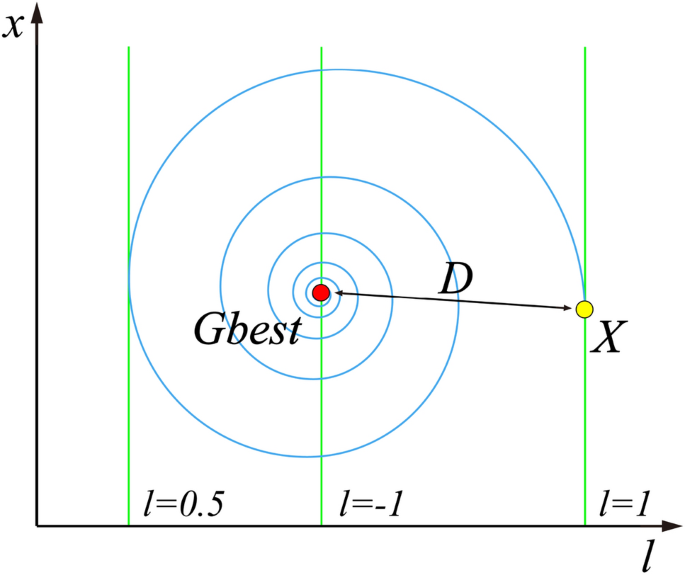
Spiral updating position.
The DE/best/2 mutation strategy is introduced to form the mutant particle. 4 individuals in the population are randomly selected that differ from the current particle, then the vector difference between them is rescaled, and the difference vector is combined with the global optimal position to form the mutant particle. The equation for mutation of particle position is shown as follows:
where \({x}^{*}\) is the mutated particle, \(F\) is the scale factor of mutation, \({r}_{1}\) , \({r}_{2}\) , \({r}_{3}\) , \({r}_{4}\) are random integer values in \((0,n]\) and not equal to \(i\) , respectively. Specific particles are selected for mutation with the screening conditions as follows:
where \(Cr\) represents the probability of mutation, \(rand\left(\mathrm{0,1}\right)\) is a random number in \(\left(\mathrm{0,1}\right)\) , and \({i}_{rand}\) is a random integer value in \((0,n]\) .
The improved PSO incorporates the search ideas of other intelligent algorithms (DE, WOA), so the improved algorithm proposed in this paper is named NDWPSO. The pseudo-code for the NDWPSO algorithm is given as follows:
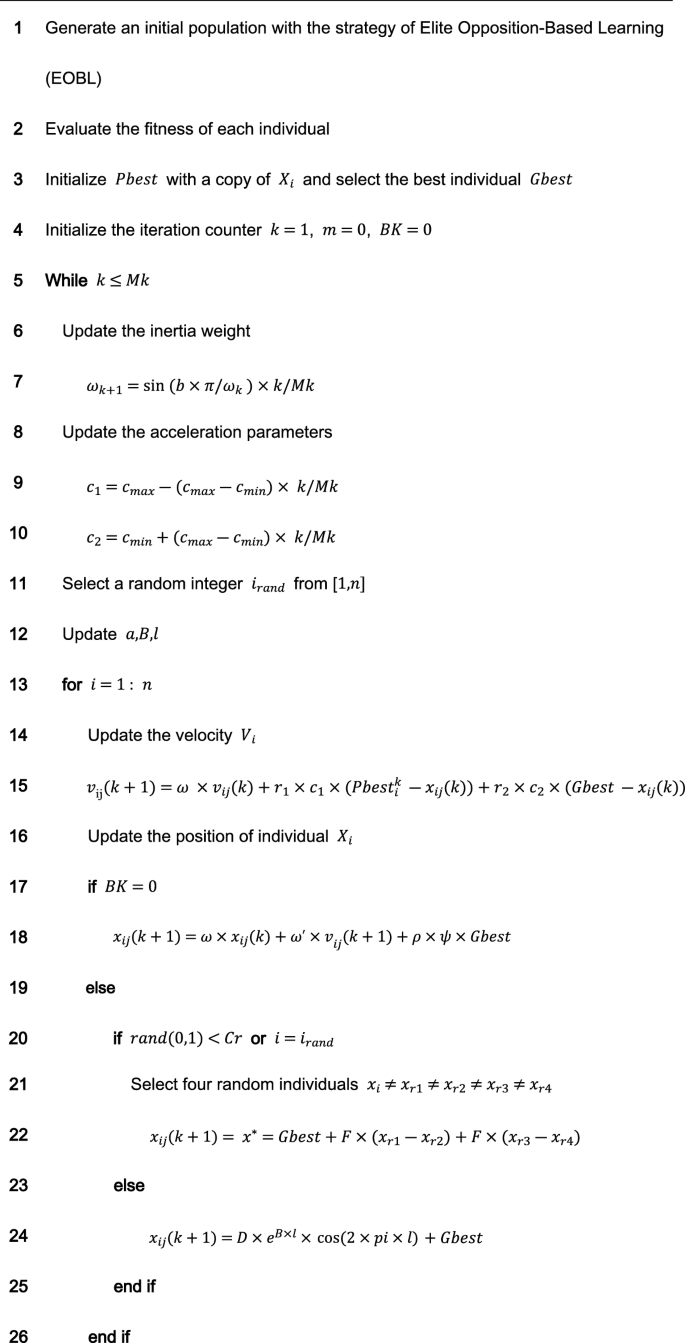
The main procedure of NDWPSO.
Comparing the distribution of inertia weight parameters
There are several improved PSO algorithms (such as CDWPSO 25 , and SDWPSO 26 ) that adopt the dynamic weighted particle position update strategy as their improvement strategy. The updated equations of the CDWPSO and the SDWPSO algorithm for the inertia weight parameters are given as follows:
where \({\text{A}}\) is a value in \((\mathrm{0,1}]\) . \({r}_{max}\) and \({r}_{min}\) are the upper and lower limits of the fluctuation range of the inertia weight parameters, \(k\) is the current number of algorithm iterations, and \(Mk\) denotes the maximum number of iterations.
Considering that the update method of inertia weight parameters by our proposed NDWPSO is comparable to the CDWPSO, and SDWPSO, a comparison experiment for the distribution of inertia weight parameters is set up in this section. The maximum number of iterations in the experiment is \(Mk=500\) . The distributions of CDWPSO, SDWPSO, and NDWPSO inertia weights are shown sequentially in Fig. 2 .

The inertial weight distribution of CDWPSO, SDWPSO, and NDWPSO.
In Fig. 2 , the inertia weight value of CDWPSO is a random value in (0,1]. It may make individual particles fly out of the range in the late iteration of the algorithm. Similarly, the inertia weight value of SDWPSO is a value that tends to zero infinitely, so that the swarm no longer can fly in the search space, making the algorithm extremely easy to fall into the local optimal value. On the other hand, the distribution of the inertia weights of the NDWPSO forms a gentle slope by two curves. Thus, the swarm can faster lock the global optimum range in the early iterations and locate the global optimal more precisely in the late iterations. The reason is that the inertia weight values between two adjacent iterations are inversely proportional to each other. Besides, the time-varying part of the inertial weight within NDWPSO is designed to reduce the chaos characteristic of the parameters. The inertia weight value of NDWPSO avoids the disadvantages of the above two schemes, so its design is more reasonable.
Experiment and discussion
In this section, three experiments are set up to evaluate the performance of NDWPSO: (1) the experiment of 23 classical functions 37 between NDWPSO and three particle swarm algorithms (PSO 6 , CDWPSO 25 , SDWPSO 26 ); (2) the experiment of benchmark test functions between NDWPSO and other intelligent algorithms (Whale Optimization Algorithm (WOA) 36 , Harris Hawk Algorithm (HHO) 38 , Gray Wolf Optimization Algorithm (GWO) 39 , Archimedes Algorithm (AOA) 40 , Equilibrium Optimizer (EO) 41 and Differential Evolution (DE) 42 ); (3) the experiment for solving three real engineering problems (welded beam design 43 , pressure vessel design 44 , and three-bar truss design 38 ). All experiments are run on a computer with Intel i5-11400F GPU, 2.60 GHz, 16 GB RAM, and the code is written with MATLAB R2017b.
The benchmark test functions are 23 classical functions, which consist of indefinite unimodal (F1–F7), indefinite dimensional multimodal functions (F8–F13), and fixed-dimensional multimodal functions (F14–F23). The unimodal benchmark function is used to evaluate the global search performance of different algorithms, while the multimodal benchmark function reflects the ability of the algorithm to escape from the local optimal. The mathematical equations of the benchmark functions are shown and found as Supplementary Tables S1 – S3 online.
Experiments on benchmark functions between NDWPSO, and other PSO variants
The purpose of the experiment is to show the performance advantages of the NDWPSO algorithm. Here, the dimensions and corresponding population sizes of 13 benchmark functions (7 unimodal and 6 multimodal) are set to (30, 40), (50, 70), and (100, 130). The population size of 10 fixed multimodal functions is set to 40. Each algorithm is repeated 30 times independently, and the maximum number of iterations is 200. The performance of the algorithm is measured by the mean and the standard deviation (SD) of the results for different benchmark functions. The parameters of the NDWPSO are set as: \({[{\omega }_{min},\omega }_{max}]=[\mathrm{0.4,0.9}]\) , \(\left[{c}_{max},{c}_{min}\right]=\left[\mathrm{2.5,1.5}\right],{V}_{max}=0.1,b={e}^{-50}, M=0.05\times Mk, B=1,F=0.7, Cr=0.9.\) And, \(A={\omega }_{max}\) for CDWPSO; \({[r}_{max},{r}_{min}]=[\mathrm{4,0}]\) for SDWPSO.
Besides, the experimental data are retained to two decimal places, but some experimental data will increase the number of retained data to pursue more accuracy in comparison. The best results in each group of experiments will be displayed in bold font. The experimental data is set to 0 if the value is below 10 –323 . The experimental parameter settings in this paper are different from the references (PSO 6 , CDWPSO 25 , SDWPSO 26 , so the final experimental data differ from the ones within the reference.
As shown in Tables 1 and 2 , the NDWPSO algorithm obtains better results for all 49 sets of data than other PSO variants, which include not only 13 indefinite-dimensional benchmark functions and 10 fixed-multimodal benchmark functions. Remarkably, the SDWPSO algorithm obtains the same accuracy of calculation as NDWPSO for both unimodal functions f 1 –f 4 and multimodal functions f 9 –f 11 . The solution accuracy of NDWPSO is higher than that of other PSO variants for fixed-multimodal benchmark functions f 14 -f 23 . The conclusion can be drawn that the NDWPSO has excellent global search capability, local search capability, and the capability for escaping the local optimal.
In addition, the convergence curves of the 23 benchmark functions are shown in Figs. 3 , 4 , 5 , 6 , 7 , 8 , 9 , 10 , 11 , 12 , 13 , 14 , 15 , 16 , 17 , 18 and 19 . The NDWPSO algorithm has a faster convergence speed in the early stage of the search for processing functions f1-f6, f8-f14, f16, f17, and finds the global optimal solution with a smaller number of iterations. In the remaining benchmark function experiments, the NDWPSO algorithm shows no outstanding performance for convergence speed in the early iterations. There are two reasons of no outstanding performance in the early iterations. On one hand, the fixed-multimodal benchmark function has many disturbances and local optimal solutions in the whole search space. on the other hand, the initialization scheme based on elite opposition-based learning is still stochastic, which leads to the initial position far from the global optimal solution. The inertia weight based on chaotic mapping and the strategy of spiral updating can significantly improve the convergence speed and computational accuracy of the algorithm in the late search stage. Finally, the NDWPSO algorithm can find better solutions than other algorithms in the middle and late stages of the search.
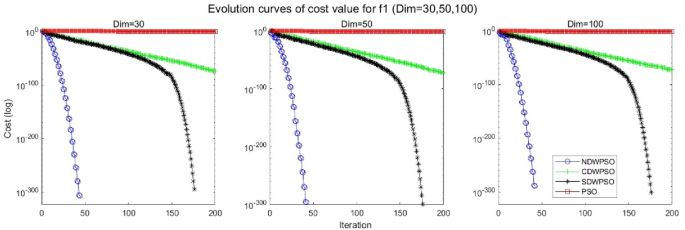
Evolution curve of NDWPSO and other PSO algorithms for f1 (Dim = 30,50,100).
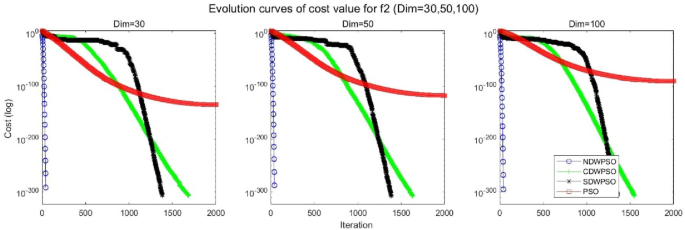
Evolution curve of NDWPSO and other PSO algorithms for f2 (Dim = 30,50,100).
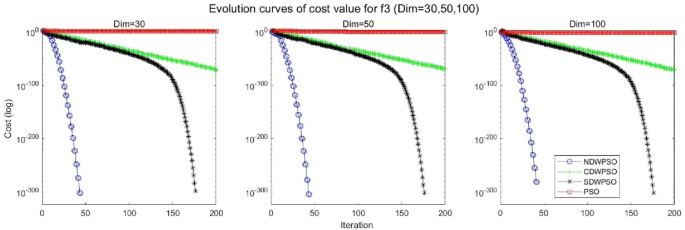
Evolution curve of NDWPSO and other PSO algorithms for f3 (Dim = 30,50,100).
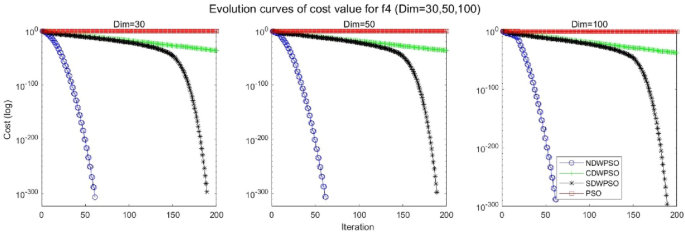
Evolution curve of NDWPSO and other PSO algorithms for f4 (Dim = 30,50,100).
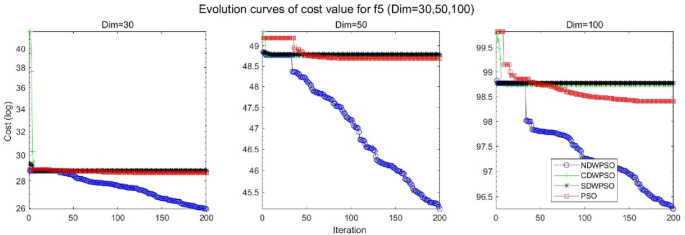
Evolution curve of NDWPSO and other PSO algorithms for f5 (Dim = 30,50,100).
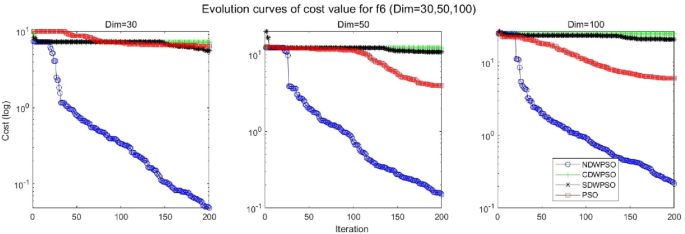
Evolution curve of NDWPSO and other PSO algorithms for f6 (Dim = 30,50,100).
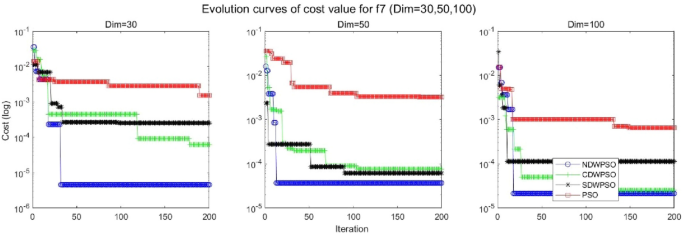
Evolution curve of NDWPSO and other PSO algorithms for f7 (Dim = 30,50,100).
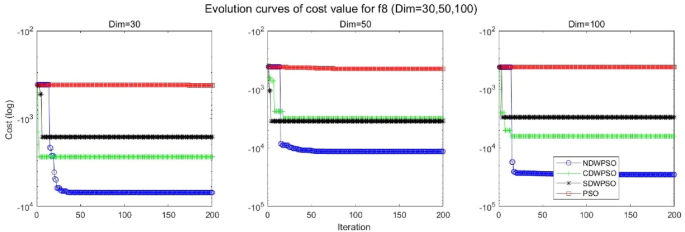
Evolution curve of NDWPSO and other PSO algorithms for f8 (Dim = 30,50,100).

Evolution curve of NDWPSO and other PSO algorithms for f9 (Dim = 30,50,100).
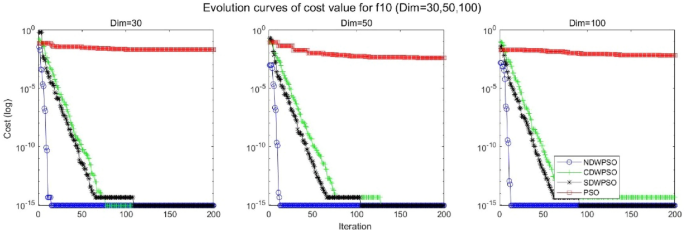
Evolution curve of NDWPSO and other PSO algorithms for f10 (Dim = 30,50,100).
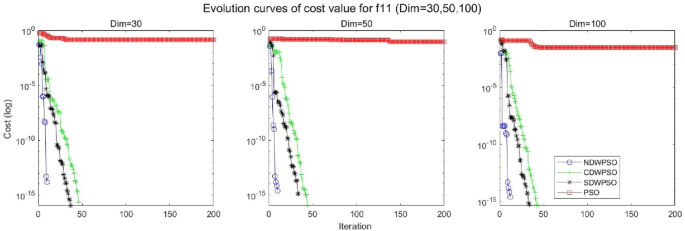
Evolution curve of NDWPSO and other PSO algorithms for f11(Dim = 30,50,100).
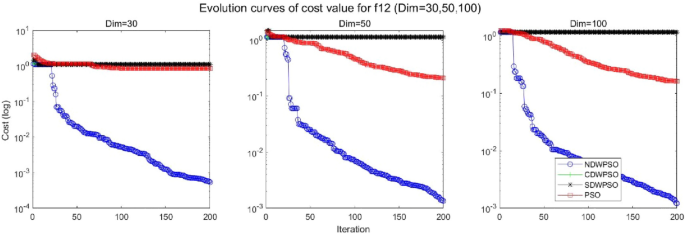
Evolution curve of NDWPSO and other PSO algorithms for f12 (Dim = 30,50,100).
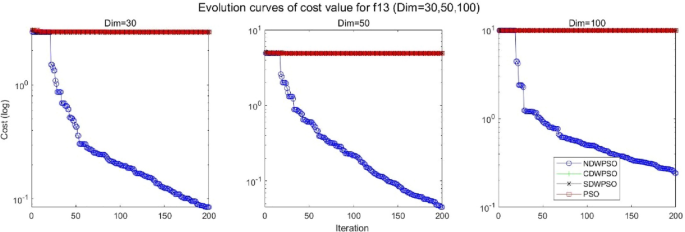
Evolution curve of NDWPSO and other PSO algorithms for f13 (Dim = 30,50,100).
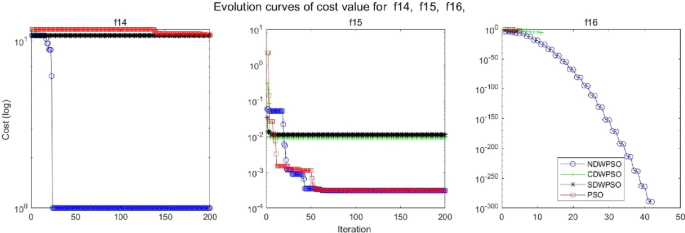
Evolution curve of NDWPSO and other PSO algorithms for f14, f15, f16.
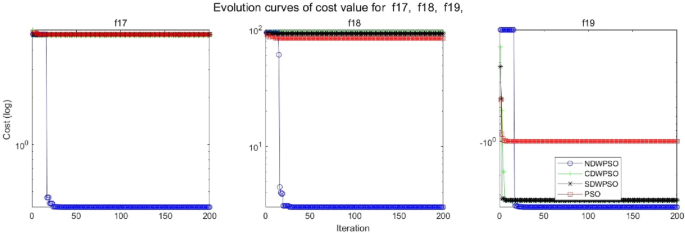
Evolution curve of NDWPSO and other PSO algorithms for f17, f18, f19.
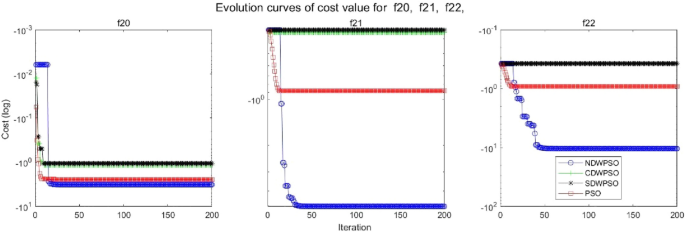
Evolution curve of NDWPSO and other PSO algorithms for f20, f21, f22.
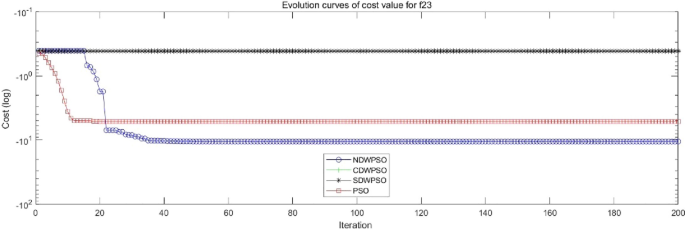
Evolution curve of NDWPSO and other PSO algorithms for f23.
To evaluate the performance of different PSO algorithms, a statistical test is conducted. Due to the stochastic nature of the meta-heuristics, it is not enough to compare algorithms based on only the mean and standard deviation values. The optimization results cannot be assumed to obey the normal distribution; thus, it is necessary to judge whether the results of the algorithms differ from each other in a statistically significant way. Here, the Wilcoxon non-parametric statistical test 45 is used to obtain a parameter called p -value to verify whether two sets of solutions are different to a statistically significant extent or not. Generally, it is considered that p ≤ 0.5 can be considered as a statistically significant superiority of the results. The p -values calculated in Wilcoxon’s rank-sum test comparing NDWPSO and other PSO algorithms are listed in Table 3 for all benchmark functions. The p -values in Table 3 additionally present the superiority of the NDWPSO because all of the p -values are much smaller than 0.5.
In general, the NDWPSO has the fastest convergence rate when finding the global optimum from Figs. 3 , 4 , 5 , 6 , 7 , 8 , 9 , 10 , 11 , 12 , 13 , 14 , 15 , 16 , 17 , 18 and 19 , and thus we can conclude that the NDWPSO is superior to the other PSO variants during the process of optimization.
Comparison experiments between NDWPSO and other intelligent algorithms
Experiments are conducted to compare NDWPSO with several other intelligent algorithms (WOA, HHO, GWO, AOA, EO and DE). The experimental object is 23 benchmark functions, and the experimental parameters of the NDWPSO algorithm are set the same as in Experiment 4.1. The maximum number of iterations of the experiment is increased to 2000 to fully demonstrate the performance of each algorithm. Each algorithm is repeated 30 times individually. The parameters of the relevant intelligent algorithms in the experiments are set as shown in Table 4 . To ensure the fairness of the algorithm comparison, all parameters are concerning the original parameters in the relevant algorithm literature. The experimental results are shown in Tables 5 , 6 , 7 and 8 and Figs. 20 , 21 , 22 , 23 , 24 , 25 , 26 , 27 , 28 , 29 , 30 , 31 , 32 , 33 , 34 , 35 and 36 .

Evolution curve of NDWPSO and other algorithms for f1 (Dim = 30,50,100).

Evolution curve of NDWPSO and other algorithms for f2 (Dim = 30,50,100).
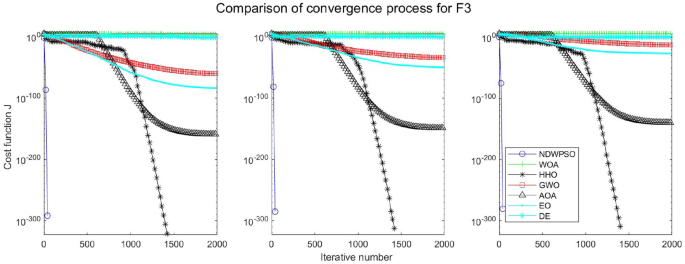
Evolution curve of NDWPSO and other algorithms for f3(Dim = 30,50,100).

Evolution curve of NDWPSO and other algorithms for f4 (Dim = 30,50,100).

Evolution curve of NDWPSO and other algorithms for f5 (Dim = 30,50,100).

Evolution curve of NDWPSO and other algorithms for f6 (Dim = 30,50,100).

Evolution curve of NDWPSO and other algorithms for f7 (Dim = 30,50,100).

Evolution curve of NDWPSO and other algorithms for f8 (Dim = 30,50,100).

Evolution curve of NDWPSO and other algorithms for f9(Dim = 30,50,100).

Evolution curve of NDWPSO and other algorithms for f10 (Dim = 30,50,100).

Evolution curve of NDWPSO and other algorithms for f11 (Dim = 30,50,100).

Evolution curve of NDWPSO and other algorithms for f12 (Dim = 30,50,100).

Evolution curve of NDWPSO and other algorithms for f13 (Dim = 30,50,100).

Evolution curve of NDWPSO and other algorithms for f14, f15, f16.

Evolution curve of NDWPSO and other algorithms for f17, f18, f19.

Evolution curve of NDWPSO and other algorithms for f20, f21, f22.
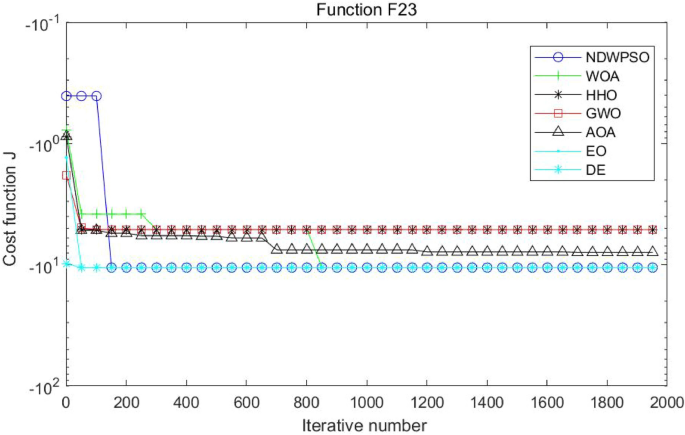
Evolution curve of NDWPSO and other algorithms for f23.
The experimental data of NDWPSO and other intelligent algorithms for handling 30, 50, and 100-dimensional benchmark functions ( \({f}_{1}-{f}_{13}\) ) are recorded in Tables 8 , 9 and 10 , respectively. The comparison data of fixed-multimodal benchmark tests ( \({f}_{14}-{f}_{23}\) ) are recorded in Table 11 . According to the data in Tables 5 , 6 and 7 , the NDWPSO algorithm obtains 69.2%, 84.6%, and 84.6% of the best results for the benchmark function ( \({f}_{1}-{f}_{13}\) ) in the search space of three dimensions (Dim = 30, 50, 100), respectively. In Table 8 , the NDWPSO algorithm obtains 80% of the optimal solutions in 10 fixed-multimodal benchmark functions.
The convergence curves of each algorithm are shown in Figs. 20 , 21 , 22 , 23 , 24 , 25 , 26 , 27 , 28 , 29 , 30 , 31 , 32 , 33 , 34 , 35 and 36 . The NDWPSO algorithm demonstrates two convergence behaviors when calculating the benchmark functions in 30, 50, and 100-dimensional search spaces. The first behavior is the fast convergence of NDWPSO with a small number of iterations at the beginning of the search. The reason is that the Iterative-mapping strategy and the position update scheme of dynamic weighting are used in the NDWPSO algorithm. This scheme can quickly target the region in the search space where the global optimum is located, and then precisely lock the optimal solution. When NDWPSO processes the functions \({f}_{1}-{f}_{4}\) , and \({f}_{9}-{f}_{11}\) , the behavior can be reflected in the convergence trend of their corresponding curves. The second behavior is that NDWPSO gradually improves the convergence accuracy and rapidly approaches the global optimal in the middle and late stages of the iteration. The NDWPSO algorithm fails to converge quickly in the early iterations, which is possible to prevent the swarm from falling into a local optimal. The behavior can be demonstrated by the convergence trend of the curves when NDWPSO handles the functions \({f}_{6}\) , \({f}_{12}\) , and \({f}_{13}\) , and it also shows that the NDWPSO algorithm has an excellent ability of local search.
Combining the experimental data with the convergence curves, it is concluded that the NDWPSO algorithm has a faster convergence speed, so the effectiveness and global convergence of the NDWPSO algorithm are more outstanding than other intelligent algorithms.
Experiments on classical engineering problems
Three constrained classical engineering design problems (welded beam design, pressure vessel design 43 , and three-bar truss design 38 ) are used to evaluate the NDWPSO algorithm. The experiments are the NDWPSO algorithm and 5 other intelligent algorithms (WOA 36 , HHO, GWO, AOA, EO 41 ). Each algorithm is provided with the maximum number of iterations and population size ( \({\text{Mk}}=500,\mathrm{ n}=40\) ), and then repeats 30 times, independently. The parameters of the algorithms are set the same as in Table 4 . The experimental results of three engineering design problems are recorded in Tables 9 , 10 and 11 in turn. The result data is the average value of the solved data.
Welded beam design
The target of the welded beam design problem is to find the optimal manufacturing cost for the welded beam with the constraints, as shown in Fig. 37 . The constraints are the thickness of the weld seam ( \({\text{h}}\) ), the length of the clamped bar ( \({\text{l}}\) ), the height of the bar ( \({\text{t}}\) ) and the thickness of the bar ( \({\text{b}}\) ). The mathematical formulation of the optimization problem is given as follows:

Welded beam design.
In Table 9 , the NDWPSO, GWO, and EO algorithms obtain the best optimal cost. Besides, the standard deviation (SD) of t NDWPSO is the lowest, which means it has very good results in solving the welded beam design problem.
Pressure vessel design
Kannan and Kramer 43 proposed the pressure vessel design problem as shown in Fig. 38 to minimize the total cost, including the cost of material, forming, and welding. There are four design optimized objects: the thickness of the shell \({T}_{s}\) ; the thickness of the head \({T}_{h}\) ; the inner radius \({\text{R}}\) ; the length of the cylindrical section without considering the head \({\text{L}}\) . The problem includes the objective function and constraints as follows:

Pressure vessel design.
The results in Table 10 show that the NDWPSO algorithm obtains the lowest optimal cost with the same constraints and has the lowest standard deviation compared with other algorithms, which again proves the good performance of NDWPSO in terms of solution accuracy.
Three-bar truss design
This structural design problem 44 is one of the most widely-used case studies as shown in Fig. 39 . There are two main design parameters: the area of the bar1 and 3 ( \({A}_{1}={A}_{3}\) ) and area of bar 2 ( \({A}_{2}\) ). The objective is to minimize the weight of the truss. This problem is subject to several constraints as well: stress, deflection, and buckling constraints. The problem is formulated as follows:
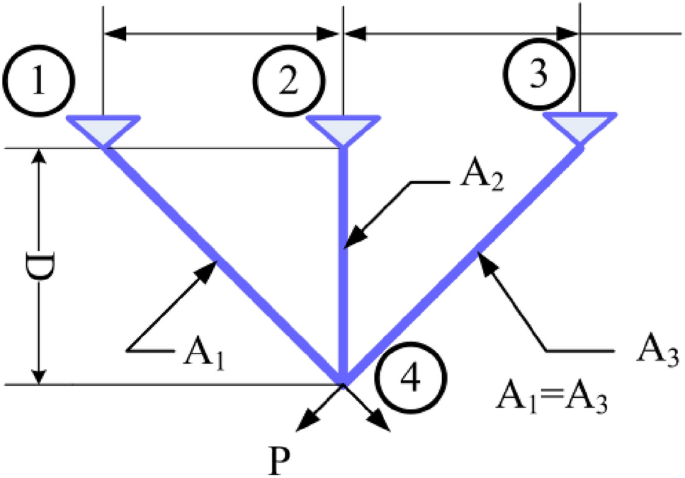
Three-bar truss design.
From Table 11 , NDWPSO obtains the best design solution in this engineering problem and has the smallest standard deviation of the result data. In summary, the NDWPSO can reveal very competitive results compared to other intelligent algorithms.
Conclusions and future works
An improved algorithm named NDWPSO is proposed to enhance the solving speed and improve the computational accuracy at the same time. The improved NDWPSO algorithm incorporates the search ideas of other intelligent algorithms (DE, WOA). Besides, we also proposed some new hybrid strategies to adjust the distribution of algorithm parameters (such as the inertia weight parameter, the acceleration coefficients, the initialization scheme, the position updating equation, and so on).
23 classical benchmark functions: indefinite unimodal (f1-f7), indefinite multimodal (f8-f13), and fixed-dimensional multimodal(f14-f23) are applied to evaluate the effective line and feasibility of the NDWPSO algorithm. Firstly, NDWPSO is compared with PSO, CDWPSO, and SDWPSO. The simulation results can prove the exploitative, exploratory, and local optima avoidance of NDWPSO. Secondly, the NDWPSO algorithm is compared with 5 other intelligent algorithms (WOA, HHO, GWO, AOA, EO). The NDWPSO algorithm also has better performance than other intelligent algorithms. Finally, 3 classical engineering problems are applied to prove that the NDWPSO algorithm shows superior results compared to other algorithms for the constrained engineering optimization problems.
Although the proposed NDWPSO is superior in many computation aspects, there are still some limitations and further improvements are needed. The NDWPSO performs a limit initialize on each particle by the strategy of “elite opposition-based learning”, it takes more computation time before speed update. Besides, the” local optimal jump-out” strategy also brings some random process. How to reduce the random process and how to improve the limit initialize efficiency are the issues that need to be further discussed. In addition, in future work, researchers will try to apply the NDWPSO algorithm to wider fields to solve more complex and diverse optimization problems.
Data availability
The datasets used and/or analyzed during the current study available from the corresponding author on reasonable request.
Sami, F. Optimize electric automation control using artificial intelligence (AI). Optik 271 , 170085 (2022).
Article ADS Google Scholar
Li, X. et al. Prediction of electricity consumption during epidemic period based on improved particle swarm optimization algorithm. Energy Rep. 8 , 437–446 (2022).
Article Google Scholar
Sun, B. Adaptive modified ant colony optimization algorithm for global temperature perception of the underground tunnel fire. Case Stud. Therm. Eng. 40 , 102500 (2022).
Bartsch, G. et al. Use of artificial intelligence and machine learning algorithms with gene expression profiling to predict recurrent nonmuscle invasive urothelial carcinoma of the bladder. J. Urol. 195 (2), 493–498 (2016).
Article PubMed Google Scholar
Bao, Z. Secure clustering strategy based on improved particle swarm optimization algorithm in internet of things. Comput. Intell. Neurosci. 2022 , 1–9 (2022).
Google Scholar
Kennedy, J. & Eberhart, R. Particle swarm optimization. In: Proceedings of ICNN'95-International Conference on Neural Networks . IEEE, 1942–1948 (1995).
Lin, Q. et al. A novel artificial bee colony algorithm with local and global information interaction. Appl. Soft Comput. 62 , 702–735 (2018).
Abed-alguni, B. H. et al. Exploratory cuckoo search for solving single-objective optimization problems. Soft Comput. 25 (15), 10167–10180 (2021).
Brajević, I. A shuffle-based artificial bee colony algorithm for solving integer programming and minimax problems. Mathematics 9 (11), 1211 (2021).
Khan, A. T. et al. Non-linear activated beetle antennae search: A novel technique for non-convex tax-aware portfolio optimization problem. Expert Syst. Appl. 197 , 116631 (2022).
Brajević, I. et al. Hybrid sine cosine algorithm for solving engineering optimization problems. Mathematics 10 (23), 4555 (2022).
Abed-Alguni, B. H., Paul, D. & Hammad, R. Improved Salp swarm algorithm for solving single-objective continuous optimization problems. Appl. Intell. 52 (15), 17217–17236 (2022).
Nadimi-Shahraki, M. H. et al. Binary starling murmuration optimizer algorithm to select effective features from medical data. Appl. Sci. 13 (1), 564 (2022).
Nadimi-Shahraki, M. H. et al. A systematic review of the whale optimization algorithm: Theoretical foundation, improvements, and hybridizations. Archiv. Comput. Methods Eng. 30 (7), 4113–4159 (2023).
Fatahi, A., Nadimi-Shahraki, M. H. & Zamani, H. An improved binary quantum-based avian navigation optimizer algorithm to select effective feature subset from medical data: A COVID-19 case study. J. Bionic Eng. 21 (1), 426–446 (2024).
Abed-alguni, B. H. & AL-Jarah, S. H. IBJA: An improved binary DJaya algorithm for feature selection. J. Comput. Sci. 75 , 102201 (2024).
Yeh, W.-C. A novel boundary swarm optimization method for reliability redundancy allocation problems. Reliab. Eng. Syst. Saf. 192 , 106060 (2019).
Solomon, S., Thulasiraman, P. & Thulasiram, R. Collaborative multi-swarm PSO for task matching using graphics processing units. In: Proceedings of the 13th Annual Conference on Genetic and Evolutionary Computation 1563–1570 (2011).
Mukhopadhyay, S. & Banerjee, S. Global optimization of an optical chaotic system by chaotic multi swarm particle swarm optimization. Expert Syst. Appl. 39 (1), 917–924 (2012).
Duan, L. et al. Improved particle swarm optimization algorithm for enhanced coupling of coaxial optical communication laser. Opt. Fiber Technol. 64 , 102559 (2021).
Sun, F., Xu, Z. & Zhang, D. Optimization design of wind turbine blade based on an improved particle swarm optimization algorithm combined with non-gaussian distribution. Adv. Civ. Eng. 2021 , 1–9 (2021).
Liu, M. et al. An improved particle-swarm-optimization algorithm for a prediction model of steel slab temperature. Appl. Sci. 12 (22), 11550 (2022).
Article MathSciNet CAS Google Scholar
Gad, A. G. Particle swarm optimization algorithm and its applications: A systematic review. Archiv. Comput. Methods Eng. 29 (5), 2531–2561 (2022).
Article MathSciNet Google Scholar
Feng, H. et al. Trajectory control of electro-hydraulic position servo system using improved PSO-PID controller. Autom. Constr. 127 , 103722 (2021).
Chen, Ke., Zhou, F. & Liu, A. Chaotic dynamic weight particle swarm optimization for numerical function optimization. Knowl. Based Syst. 139 , 23–40 (2018).
Bai, B. et al. Reliability prediction-based improved dynamic weight particle swarm optimization and back propagation neural network in engineering systems. Expert Syst. Appl. 177 , 114952 (2021).
Alsaidy, S. A., Abbood, A. D. & Sahib, M. A. Heuristic initialization of PSO task scheduling algorithm in cloud computing. J. King Saud Univ. –Comput. Inf. Sci. 34 (6), 2370–2382 (2022).
Liu, H., Cai, Z. & Wang, Y. Hybridizing particle swarm optimization with differential evolution for constrained numerical and engineering optimization. Appl. Soft Comput. 10 (2), 629–640 (2010).
Deng, W. et al. A novel intelligent diagnosis method using optimal LS-SVM with improved PSO algorithm. Soft Comput. 23 , 2445–2462 (2019).
Huang, M. & Zhen, L. Research on mechanical fault prediction method based on multifeature fusion of vibration sensing data. Sensors 20 (1), 6 (2019).
Article ADS PubMed PubMed Central Google Scholar
Wolpert, D. H. & Macready, W. G. No free lunch theorems for optimization. IEEE Trans. Evol. Comput. 1 (1), 67–82 (1997).
Gandomi, A. H. et al. Firefly algorithm with chaos. Commun. Nonlinear Sci. Numer. Simul. 18 (1), 89–98 (2013).
Article ADS MathSciNet Google Scholar
Zhou, Y., Wang, R. & Luo, Q. Elite opposition-based flower pollination algorithm. Neurocomputing 188 , 294–310 (2016).
Li, G., Niu, P. & Xiao, X. Development and investigation of efficient artificial bee colony algorithm for numerical function optimization. Appl. Soft Comput. 12 (1), 320–332 (2012).
Xiong, G. et al. Parameter extraction of solar photovoltaic models by means of a hybrid differential evolution with whale optimization algorithm. Solar Energy 176 , 742–761 (2018).
Mirjalili, S. & Lewis, A. The whale optimization algorithm. Adv. Eng. Softw. 95 , 51–67 (2016).
Yao, X., Liu, Y. & Lin, G. Evolutionary programming made faster. IEEE Trans. Evol. Comput. 3 (2), 82–102 (1999).
Heidari, A. A. et al. Harris hawks optimization: Algorithm and applications. Fut. Gener. Comput. Syst. 97 , 849–872 (2019).
Mirjalili, S., Mirjalili, S. M. & Lewis, A. Grey wolf optimizer. Adv. Eng. Softw. 69 , 46–61 (2014).
Hashim, F. A. et al. Archimedes optimization algorithm: A new metaheuristic algorithm for solving optimization problems. Appl. Intell. 51 , 1531–1551 (2021).
Faramarzi, A. et al. Equilibrium optimizer: A novel optimization algorithm. Knowl. -Based Syst. 191 , 105190 (2020).
Pant, M. et al. Differential evolution: A review of more than two decades of research. Eng. Appl. Artif. Intell. 90 , 103479 (2020).
Coello, C. A. C. Use of a self-adaptive penalty approach for engineering optimization problems. Comput. Ind. 41 (2), 113–127 (2000).
Kannan, B. K. & Kramer, S. N. An augmented lagrange multiplier based method for mixed integer discrete continuous optimization and its applications to mechanical design. J. Mech. Des. 116 , 405–411 (1994).
Derrac, J. et al. A practical tutorial on the use of nonparametric statistical tests as a methodology for comparing evolutionary and swarm intelligence algorithms. Swarm Evol. Comput. 1 (1), 3–18 (2011).
Download references
Acknowledgements
This work was supported by Key R&D plan of Shandong Province, China (2021CXGC010207, 2023CXGC01020); First batch of talent research projects of Qilu University of Technology in 2023 (2023RCKY116); Introduction of urgently needed talent projects in Key Supported Regions of Shandong Province; Key Projects of Natural Science Foundation of Shandong Province (ZR2020ME116); the Innovation Ability Improvement Project for Technology-based Small- and Medium-sized Enterprises of Shandong Province (2022TSGC2051, 2023TSGC0024, 2023TSGC0931); National Key R&D Program of China (2019YFB1705002), LiaoNing Revitalization Talents Program (XLYC2002041) and Young Innovative Talents Introduction & Cultivation Program for Colleges and Universities of Shandong Province (Granted by Department of Education of Shandong Province, Sub-Title: Innovative Research Team of High Performance Integrated Device).
Author information
Authors and affiliations.
School of Mechanical and Automotive Engineering, Qilu University of Technology (Shandong Academy of Sciences), Jinan, 250353, China
Jinwei Qiao, Guangyuan Wang, Zhi Yang, Jun Chen & Pengbo Liu
Shandong Institute of Mechanical Design and Research, Jinan, 250353, China
School of Information Science and Engineering, Northeastern University, Shenyang, 110819, China
Xiaochuan Luo
Fushun Supervision Inspection Institute for Special Equipment, Fushun, 113000, China
You can also search for this author in PubMed Google Scholar
Contributions
Z.Y., J.Q., and G.W. wrote the main manuscript text and prepared all figures and tables. J.C., P.L., K.L., and X.L. were responsible for the data curation and software. All authors reviewed the manuscript.
Corresponding author
Correspondence to Zhi Yang .
Ethics declarations
Competing interests.
The authors declare no competing interests.
Additional information
Publisher's note.
Springer Nature remains neutral with regard to jurisdictional claims in published maps and institutional affiliations.
Supplementary Information
Supplementary information., rights and permissions.
Open Access This article is licensed under a Creative Commons Attribution 4.0 International License, which permits use, sharing, adaptation, distribution and reproduction in any medium or format, as long as you give appropriate credit to the original author(s) and the source, provide a link to the Creative Commons licence, and indicate if changes were made. The images or other third party material in this article are included in the article's Creative Commons licence, unless indicated otherwise in a credit line to the material. If material is not included in the article's Creative Commons licence and your intended use is not permitted by statutory regulation or exceeds the permitted use, you will need to obtain permission directly from the copyright holder. To view a copy of this licence, visit http://creativecommons.org/licenses/by/4.0/ .
Reprints and permissions
About this article
Cite this article.
Qiao, J., Wang, G., Yang, Z. et al. A hybrid particle swarm optimization algorithm for solving engineering problem. Sci Rep 14 , 8357 (2024). https://doi.org/10.1038/s41598-024-59034-2
Download citation
Received : 11 January 2024
Accepted : 05 April 2024
Published : 10 April 2024
DOI : https://doi.org/10.1038/s41598-024-59034-2
Share this article
Anyone you share the following link with will be able to read this content:
Sorry, a shareable link is not currently available for this article.
Provided by the Springer Nature SharedIt content-sharing initiative
- Particle swarm optimization
- Elite opposition-based learning
- Iterative mapping
- Convergence analysis
By submitting a comment you agree to abide by our Terms and Community Guidelines . If you find something abusive or that does not comply with our terms or guidelines please flag it as inappropriate.
Quick links
- Explore articles by subject
- Guide to authors
- Editorial policies
Sign up for the Nature Briefing newsletter — what matters in science, free to your inbox daily.
- Search Menu
- Advance articles
- Special issues
- Research articles
- Review articles
- Editor's Choice
- Author Guidelines
- Guidelines for Special Issue
- Submission Site
- Open Access Options
- Self-Archiving Policy
- About Journal of Computational Design and Engineering
- Editorial Board
- Advertising & Corporate Services
- Journals on Oxford Academic
- Books on Oxford Academic
Article Contents
A novel hippo swarm optimization: for solving high-dimensional problems and engineering design problems.
- Article contents
- Figures & tables
- Supplementary Data
Guoyuan Zhou, Jiaxuan Du, Jia Guo, Guoliang Li, A Novel Hippo Swarm Optimization: For solving high-dimensional problems and engineering design problems, Journal of Computational Design and Engineering , 2024;, qwae035, https://doi.org/10.1093/jcde/qwae035
- Permissions Icon Permissions
In recent years, scholars have developed and enhanced optimization algorithms to tackle high-dimensional optimization and engineering challenges. The primary challenge of high-dimensional optimization lies in striking a balance between exploring a wide search space and focusing on specific regions. Meanwhile, engineering design problems are intricate and come with various constraints. This research introduces a novel approach called Hippo Swarm Optimization (HSO), inspired by the behavior of hippos, designed to address high-dimensional optimization problems and real-world engineering challenges. HSO encompasses four distinct search strategies based on the behavior of hippos in different scenarios: starvation search, alpha search, margination, and competition. To assess the effectiveness of HSO, we conducted experiments using the CEC2017 test set, featuring the highest-dimensional problems, CEC2022 and four constrained engineering problems. In parallel, we employed 14 established optimization algorithms as a control group. The experimental outcomes reveal that HSO outperforms the 14 well-known optimization algorithms, achieving first average ranking out of them in CEC2017 and CEC2022. Across the four classical engineering design problems, HSO consistently delivers the best results. These results substantiate HSO as a highly effective optimization algorithm for both high-dimensional optimization and engineering challenges.
Email alerts
Citing articles via.
- Advertising and Corporate Services
- Journals Career Network
Affiliations
- Online ISSN 2288-5048
- Copyright © 2024 Society for Computational Design and Engineering
- About Oxford Academic
- Publish journals with us
- University press partners
- What we publish
- New features
- Open access
- Institutional account management
- Rights and permissions
- Get help with access
- Accessibility
- Advertising
- Media enquiries
- Oxford University Press
- Oxford Languages
- University of Oxford
Oxford University Press is a department of the University of Oxford. It furthers the University's objective of excellence in research, scholarship, and education by publishing worldwide
- Copyright © 2024 Oxford University Press
- Cookie settings
- Cookie policy
- Privacy policy
- Legal notice
This Feature Is Available To Subscribers Only
Sign In or Create an Account
This PDF is available to Subscribers Only
For full access to this pdf, sign in to an existing account, or purchase an annual subscription.
- SUGGESTED TOPICS
- The Magazine
- Newsletters
- Managing Yourself
- Managing Teams
- Work-life Balance
- The Big Idea
- Data & Visuals
- Reading Lists
- Case Selections
- HBR Learning
- Topic Feeds
- Account Settings
- Email Preferences
Share Podcast

Do You Understand the Problem You’re Trying to Solve?
To solve tough problems at work, first ask these questions.
- Apple Podcasts
- Google Podcasts
Problem solving skills are invaluable in any job. But all too often, we jump to find solutions to a problem without taking time to really understand the dilemma we face, according to Thomas Wedell-Wedellsborg , an expert in innovation and the author of the book, What’s Your Problem?: To Solve Your Toughest Problems, Change the Problems You Solve .
In this episode, you’ll learn how to reframe tough problems by asking questions that reveal all the factors and assumptions that contribute to the situation. You’ll also learn why searching for just one root cause can be misleading.
Key episode topics include: leadership, decision making and problem solving, power and influence, business management.
HBR On Leadership curates the best case studies and conversations with the world’s top business and management experts, to help you unlock the best in those around you. New episodes every week.
- Listen to the original HBR IdeaCast episode: The Secret to Better Problem Solving (2016)
- Find more episodes of HBR IdeaCast
- Discover 100 years of Harvard Business Review articles, case studies, podcasts, and more at HBR.org .
HANNAH BATES: Welcome to HBR on Leadership , case studies and conversations with the world’s top business and management experts, hand-selected to help you unlock the best in those around you.
Problem solving skills are invaluable in any job. But even the most experienced among us can fall into the trap of solving the wrong problem.
Thomas Wedell-Wedellsborg says that all too often, we jump to find solutions to a problem – without taking time to really understand what we’re facing.
He’s an expert in innovation, and he’s the author of the book, What’s Your Problem?: To Solve Your Toughest Problems, Change the Problems You Solve .
In this episode, you’ll learn how to reframe tough problems, by asking questions that reveal all the factors and assumptions that contribute to the situation. You’ll also learn why searching for one root cause can be misleading. And you’ll learn how to use experimentation and rapid prototyping as problem-solving tools.
This episode originally aired on HBR IdeaCast in December 2016. Here it is.
SARAH GREEN CARMICHAEL: Welcome to the HBR IdeaCast from Harvard Business Review. I’m Sarah Green Carmichael.
Problem solving is popular. People put it on their resumes. Managers believe they excel at it. Companies count it as a key proficiency. We solve customers’ problems.
The problem is we often solve the wrong problems. Albert Einstein and Peter Drucker alike have discussed the difficulty of effective diagnosis. There are great frameworks for getting teams to attack true problems, but they’re often hard to do daily and on the fly. That’s where our guest comes in.
Thomas Wedell-Wedellsborg is a consultant who helps companies and managers reframe their problems so they can come up with an effective solution faster. He asks the question “Are You Solving The Right Problems?” in the January-February 2017 issue of Harvard Business Review. Thomas, thank you so much for coming on the HBR IdeaCast .
THOMAS WEDELL-WEDELLSBORG: Thanks for inviting me.
SARAH GREEN CARMICHAEL: So, I thought maybe we could start by talking about the problem of talking about problem reframing. What is that exactly?
THOMAS WEDELL-WEDELLSBORG: Basically, when people face a problem, they tend to jump into solution mode to rapidly, and very often that means that they don’t really understand, necessarily, the problem they’re trying to solve. And so, reframing is really a– at heart, it’s a method that helps you avoid that by taking a second to go in and ask two questions, basically saying, first of all, wait. What is the problem we’re trying to solve? And then crucially asking, is there a different way to think about what the problem actually is?
SARAH GREEN CARMICHAEL: So, I feel like so often when this comes up in meetings, you know, someone says that, and maybe they throw out the Einstein quote about you spend an hour of problem solving, you spend 55 minutes to find the problem. And then everyone else in the room kind of gets irritated. So, maybe just give us an example of maybe how this would work in practice in a way that would not, sort of, set people’s teeth on edge, like oh, here Sarah goes again, reframing the whole problem instead of just solving it.
THOMAS WEDELL-WEDELLSBORG: I mean, you’re bringing up something that’s, I think is crucial, which is to create legitimacy for the method. So, one of the reasons why I put out the article is to give people a tool to say actually, this thing is still important, and we need to do it. But I think the really critical thing in order to make this work in a meeting is actually to learn how to do it fast, because if you have the idea that you need to spend 30 minutes in a meeting delving deeply into the problem, I mean, that’s going to be uphill for most problems. So, the critical thing here is really to try to make it a practice you can implement very, very rapidly.
There’s an example that I would suggest memorizing. This is the example that I use to explain very rapidly what it is. And it’s basically, I call it the slow elevator problem. You imagine that you are the owner of an office building, and that your tenants are complaining that the elevator’s slow.
Now, if you take that problem framing for granted, you’re going to start thinking creatively around how do we make the elevator faster. Do we install a new motor? Do we have to buy a new lift somewhere?
The thing is, though, if you ask people who actually work with facilities management, well, they’re going to have a different solution for you, which is put up a mirror next to the elevator. That’s what happens is, of course, that people go oh, I’m busy. I’m busy. I’m– oh, a mirror. Oh, that’s beautiful.
And then they forget time. What’s interesting about that example is that the idea with a mirror is actually a solution to a different problem than the one you first proposed. And so, the whole idea here is once you get good at using reframing, you can quickly identify other aspects of the problem that might be much better to try to solve than the original one you found. It’s not necessarily that the first one is wrong. It’s just that there might be better problems out there to attack that we can, means we can do things much faster, cheaper, or better.
SARAH GREEN CARMICHAEL: So, in that example, I can understand how A, it’s probably expensive to make the elevator faster, so it’s much cheaper just to put up a mirror. And B, maybe the real problem people are actually feeling, even though they’re not articulating it right, is like, I hate waiting for the elevator. But if you let them sort of fix their hair or check their teeth, they’re suddenly distracted and don’t notice.
But if you have, this is sort of a pedestrian example, but say you have a roommate or a spouse who doesn’t clean up the kitchen. Facing that problem and not having your elegant solution already there to highlight the contrast between the perceived problem and the real problem, how would you take a problem like that and attack it using this method so that you can see what some of the other options might be?
THOMAS WEDELL-WEDELLSBORG: Right. So, I mean, let’s say it’s you who have that problem. I would go in and say, first of all, what would you say the problem is? Like, if you were to describe your view of the problem, what would that be?
SARAH GREEN CARMICHAEL: I hate cleaning the kitchen, and I want someone else to clean it up.
THOMAS WEDELL-WEDELLSBORG: OK. So, my first observation, you know, that somebody else might not necessarily be your spouse. So, already there, there’s an inbuilt assumption in your question around oh, it has to be my husband who does the cleaning. So, it might actually be worth, already there to say, is that really the only problem you have? That you hate cleaning the kitchen, and you want to avoid it? Or might there be something around, as well, getting a better relationship in terms of how you solve problems in general or establishing a better way to handle small problems when dealing with your spouse?
SARAH GREEN CARMICHAEL: Or maybe, now that I’m thinking that, maybe the problem is that you just can’t find the stuff in the kitchen when you need to find it.
THOMAS WEDELL-WEDELLSBORG: Right, and so that’s an example of a reframing, that actually why is it a problem that the kitchen is not clean? Is it only because you hate the act of cleaning, or does it actually mean that it just takes you a lot longer and gets a lot messier to actually use the kitchen, which is a different problem. The way you describe this problem now, is there anything that’s missing from that description?
SARAH GREEN CARMICHAEL: That is a really good question.
THOMAS WEDELL-WEDELLSBORG: Other, basically asking other factors that we are not talking about right now, and I say those because people tend to, when given a problem, they tend to delve deeper into the detail. What often is missing is actually an element outside of the initial description of the problem that might be really relevant to what’s going on. Like, why does the kitchen get messy in the first place? Is it something about the way you use it or your cooking habits? Is it because the neighbor’s kids, kind of, use it all the time?
There might, very often, there might be issues that you’re not really thinking about when you first describe the problem that actually has a big effect on it.
SARAH GREEN CARMICHAEL: I think at this point it would be helpful to maybe get another business example, and I’m wondering if you could tell us the story of the dog adoption problem.
THOMAS WEDELL-WEDELLSBORG: Yeah. This is a big problem in the US. If you work in the shelter industry, basically because dogs are so popular, more than 3 million dogs every year enter a shelter, and currently only about half of those actually find a new home and get adopted. And so, this is a problem that has persisted. It’s been, like, a structural problem for decades in this space. In the last three years, where people found new ways to address it.
So a woman called Lori Weise who runs a rescue organization in South LA, and she actually went in and challenged the very idea of what we were trying to do. She said, no, no. The problem we’re trying to solve is not about how to get more people to adopt dogs. It is about keeping the dogs with their first family so they never enter the shelter system in the first place.
In 2013, she started what’s called a Shelter Intervention Program that basically works like this. If a family comes and wants to hand over their dog, these are called owner surrenders. It’s about 30% of all dogs that come into a shelter. All they would do is go up and ask, if you could, would you like to keep your animal? And if they said yes, they would try to fix whatever helped them fix the problem, but that made them turn over this.
And sometimes that might be that they moved into a new building. The landlord required a deposit, and they simply didn’t have the money to put down a deposit. Or the dog might need a $10 rabies shot, but they didn’t know how to get access to a vet.
And so, by instigating that program, just in the first year, she took her, basically the amount of dollars they spent per animal they helped went from something like $85 down to around $60. Just an immediate impact, and her program now is being rolled out, is being supported by the ASPCA, which is one of the big animal welfare stations, and it’s being rolled out to various other places.
And I think what really struck me with that example was this was not dependent on having the internet. This was not, oh, we needed to have everybody mobile before we could come up with this. This, conceivably, we could have done 20 years ago. Only, it only happened when somebody, like in this case Lori, went in and actually rethought what the problem they were trying to solve was in the first place.
SARAH GREEN CARMICHAEL: So, what I also think is so interesting about that example is that when you talk about it, it doesn’t sound like the kind of thing that would have been thought of through other kinds of problem solving methods. There wasn’t necessarily an After Action Review or a 5 Whys exercise or a Six Sigma type intervention. I don’t want to throw those other methods under the bus, but how can you get such powerful results with such a very simple way of thinking about something?
THOMAS WEDELL-WEDELLSBORG: That was something that struck me as well. This, in a way, reframing and the idea of the problem diagnosis is important is something we’ve known for a long, long time. And we’ve actually have built some tools to help out. If you worked with us professionally, you are familiar with, like, Six Sigma, TRIZ, and so on. You mentioned 5 Whys. A root cause analysis is another one that a lot of people are familiar with.
Those are our good tools, and they’re definitely better than nothing. But what I notice when I work with the companies applying those was those tools tend to make you dig deeper into the first understanding of the problem we have. If it’s the elevator example, people start asking, well, is that the cable strength, or is the capacity of the elevator? That they kind of get caught by the details.
That, in a way, is a bad way to work on problems because it really assumes that there’s like a, you can almost hear it, a root cause. That you have to dig down and find the one true problem, and everything else was just symptoms. That’s a bad way to think about problems because problems tend to be multicausal.
There tend to be lots of causes or levers you can potentially press to address a problem. And if you think there’s only one, if that’s the right problem, that’s actually a dangerous way. And so I think that’s why, that this is a method I’ve worked with over the last five years, trying to basically refine how to make people better at this, and the key tends to be this thing about shifting out and saying, is there a totally different way of thinking about the problem versus getting too caught up in the mechanistic details of what happens.
SARAH GREEN CARMICHAEL: What about experimentation? Because that’s another method that’s become really popular with the rise of Lean Startup and lots of other innovation methodologies. Why wouldn’t it have worked to, say, experiment with many different types of fixing the dog adoption problem, and then just pick the one that works the best?
THOMAS WEDELL-WEDELLSBORG: You could say in the dog space, that’s what’s been going on. I mean, there is, in this industry and a lot of, it’s largely volunteer driven. People have experimented, and they found different ways of trying to cope. And that has definitely made the problem better. So, I wouldn’t say that experimentation is bad, quite the contrary. Rapid prototyping, quickly putting something out into the world and learning from it, that’s a fantastic way to learn more and to move forward.
My point is, though, that I feel we’ve come to rely too much on that. There’s like, if you look at the start up space, the wisdom is now just to put something quickly into the market, and then if it doesn’t work, pivot and just do more stuff. What reframing really is, I think of it as the cognitive counterpoint to prototyping. So, this is really a way of seeing very quickly, like not just working on the solution, but also working on our understanding of the problem and trying to see is there a different way to think about that.
If you only stick with experimentation, again, you tend to sometimes stay too much in the same space trying minute variations of something instead of taking a step back and saying, wait a minute. What is this telling us about what the real issue is?
SARAH GREEN CARMICHAEL: So, to go back to something that we touched on earlier, when we were talking about the completely hypothetical example of a spouse who does not clean the kitchen–
THOMAS WEDELL-WEDELLSBORG: Completely, completely hypothetical.
SARAH GREEN CARMICHAEL: Yes. For the record, my husband is a great kitchen cleaner.
You started asking me some questions that I could see immediately were helping me rethink that problem. Is that kind of the key, just having a checklist of questions to ask yourself? How do you really start to put this into practice?
THOMAS WEDELL-WEDELLSBORG: I think there are two steps in that. The first one is just to make yourself better at the method. Yes, you should kind of work with a checklist. In the article, I kind of outlined seven practices that you can use to do this.
But importantly, I would say you have to consider that as, basically, a set of training wheels. I think there’s a big, big danger in getting caught in a checklist. This is something I work with.
My co-author Paddy Miller, it’s one of his insights. That if you start giving people a checklist for things like this, they start following it. And that’s actually a problem, because what you really want them to do is start challenging their thinking.
So the way to handle this is to get some practice using it. Do use the checklist initially, but then try to step away from it and try to see if you can organically make– it’s almost a habit of mind. When you run into a colleague in the hallway and she has a problem and you have five minutes, like, delving in and just starting asking some of those questions and using your intuition to say, wait, how is she talking about this problem? And is there a question or two I can ask her about the problem that can help her rethink it?
SARAH GREEN CARMICHAEL: Well, that is also just a very different approach, because I think in that situation, most of us can’t go 30 seconds without jumping in and offering solutions.
THOMAS WEDELL-WEDELLSBORG: Very true. The drive toward solutions is very strong. And to be clear, I mean, there’s nothing wrong with that if the solutions work. So, many problems are just solved by oh, you know, oh, here’s the way to do that. Great.
But this is really a powerful method for those problems where either it’s something we’ve been banging our heads against tons of times without making progress, or when you need to come up with a really creative solution. When you’re facing a competitor with a much bigger budget, and you know, if you solve the same problem later, you’re not going to win. So, that basic idea of taking that approach to problems can often help you move forward in a different way than just like, oh, I have a solution.
I would say there’s also, there’s some interesting psychological stuff going on, right? Where you may have tried this, but if somebody tries to serve up a solution to a problem I have, I’m often resistant towards them. Kind if like, no, no, no, no, no, no. That solution is not going to work in my world. Whereas if you get them to discuss and analyze what the problem really is, you might actually dig something up.
Let’s go back to the kitchen example. One powerful question is just to say, what’s your own part in creating this problem? It’s very often, like, people, they describe problems as if it’s something that’s inflicted upon them from the external world, and they are innocent bystanders in that.
SARAH GREEN CARMICHAEL: Right, or crazy customers with unreasonable demands.
THOMAS WEDELL-WEDELLSBORG: Exactly, right. I don’t think I’ve ever met an agency or consultancy that didn’t, like, gossip about their customers. Oh, my god, they’re horrible. That, you know, classic thing, why don’t they want to take more risk? Well, risk is bad.
It’s their business that’s on the line, not the consultancy’s, right? So, absolutely, that’s one of the things when you step into a different mindset and kind of, wait. Oh yeah, maybe I actually am part of creating this problem in a sense, as well. That tends to open some new doors for you to move forward, in a way, with stuff that you may have been struggling with for years.
SARAH GREEN CARMICHAEL: So, we’ve surfaced a couple of questions that are useful. I’m curious to know, what are some of the other questions that you find yourself asking in these situations, given that you have made this sort of mental habit that you do? What are the questions that people seem to find really useful?
THOMAS WEDELL-WEDELLSBORG: One easy one is just to ask if there are any positive exceptions to the problem. So, was there day where your kitchen was actually spotlessly clean? And then asking, what was different about that day? Like, what happened there that didn’t happen the other days? That can very often point people towards a factor that they hadn’t considered previously.
SARAH GREEN CARMICHAEL: We got take-out.
THOMAS WEDELL-WEDELLSBORG: S,o that is your solution. Take-out from [INAUDIBLE]. That might have other problems.
Another good question, and this is a little bit more high level. It’s actually more making an observation about labeling how that person thinks about the problem. And what I mean with that is, we have problem categories in our head. So, if I say, let’s say that you describe a problem to me and say, well, we have a really great product and are, it’s much better than our previous product, but people aren’t buying it. I think we need to put more marketing dollars into this.
Now you can go in and say, that’s interesting. This sounds like you’re thinking of this as a communications problem. Is there a different way of thinking about that? Because you can almost tell how, when the second you say communications, there are some ideas about how do you solve a communications problem. Typically with more communication.
And what you might do is go in and suggest, well, have you considered that it might be, say, an incentive problem? Are there incentives on behalf of the purchasing manager at your clients that are obstructing you? Might there be incentive issues with your own sales force that makes them want to sell the old product instead of the new one?
So literally, just identifying what type of problem does this person think about, and is there different potential way of thinking about it? Might it be an emotional problem, a timing problem, an expectations management problem? Thinking about what label of what type of problem that person is kind of thinking as it of.
SARAH GREEN CARMICHAEL: That’s really interesting, too, because I think so many of us get requests for advice that we’re really not qualified to give. So, maybe the next time that happens, instead of muddying my way through, I will just ask some of those questions that we talked about instead.
THOMAS WEDELL-WEDELLSBORG: That sounds like a good idea.
SARAH GREEN CARMICHAEL: So, Thomas, this has really helped me reframe the way I think about a couple of problems in my own life, and I’m just wondering. I know you do this professionally, but is there a problem in your life that thinking this way has helped you solve?
THOMAS WEDELL-WEDELLSBORG: I’ve, of course, I’ve been swallowing my own medicine on this, too, and I think I have, well, maybe two different examples, and in one case somebody else did the reframing for me. But in one case, when I was younger, I often kind of struggled a little bit. I mean, this is my teenage years, kind of hanging out with my parents. I thought they were pretty annoying people. That’s not really fair, because they’re quite wonderful, but that’s what life is when you’re a teenager.
And one of the things that struck me, suddenly, and this was kind of the positive exception was, there was actually an evening where we really had a good time, and there wasn’t a conflict. And the core thing was, I wasn’t just seeing them in their old house where I grew up. It was, actually, we were at a restaurant. And it suddenly struck me that so much of the sometimes, kind of, a little bit, you love them but they’re annoying kind of dynamic, is tied to the place, is tied to the setting you are in.
And of course, if– you know, I live abroad now, if I visit my parents and I stay in my old bedroom, you know, my mother comes in and wants to wake me up in the morning. Stuff like that, right? And it just struck me so, so clearly that it’s– when I change this setting, if I go out and have dinner with them at a different place, that the dynamic, just that dynamic disappears.
SARAH GREEN CARMICHAEL: Well, Thomas, this has been really, really helpful. Thank you for talking with me today.
THOMAS WEDELL-WEDELLSBORG: Thank you, Sarah.
HANNAH BATES: That was Thomas Wedell-Wedellsborg in conversation with Sarah Green Carmichael on the HBR IdeaCast. He’s an expert in problem solving and innovation, and he’s the author of the book, What’s Your Problem?: To Solve Your Toughest Problems, Change the Problems You Solve .
We’ll be back next Wednesday with another hand-picked conversation about leadership from the Harvard Business Review. If you found this episode helpful, share it with your friends and colleagues, and follow our show on Apple Podcasts, Spotify, or wherever you get your podcasts. While you’re there, be sure to leave us a review.
We’re a production of Harvard Business Review. If you want more podcasts, articles, case studies, books, and videos like this, find it all at HBR dot org.
This episode was produced by Anne Saini, and me, Hannah Bates. Ian Fox is our editor. Music by Coma Media. Special thanks to Maureen Hoch, Adi Ignatius, Karen Player, Ramsey Khabbaz, Nicole Smith, Anne Bartholomew, and you – our listener.
See you next week.
- Subscribe On:
Latest in this series
This article is about leadership.
- Decision making and problem solving
- Power and influence
- Business management
Partner Center
Solving women’s health issues through engineering focus of course
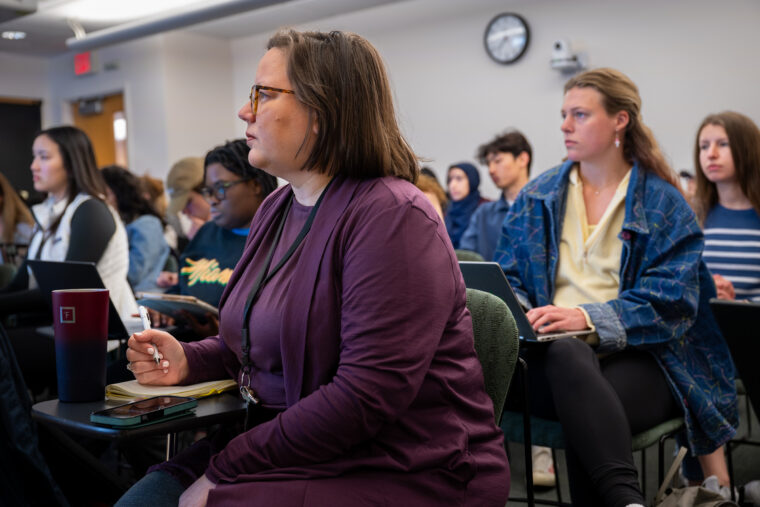
Women’s health through the lifespan has been getting a new focus in recent years from the local to the federal level, with President Joe Biden recently launching initiatives to boost federally funded research in this long-overlooked area. That focus is also active in the McKelvey School of Engineering at Washington University in St. Louis, where a new Department of Biomedical Engineering elective course is filled with students interested in how they can use engineering to solve problems in women’s health.
The “Engineering for Women’s Health” course (BME 4780/5780), available to undergraduate and graduate students, is taught by Michelle Oyen, an associate professor of biomedical engineering and director of the Center for Women’s Health Engineering. Initially, Oyen offered 16 seats in the course, but demand quickly led her to increase the number of students to 48.
The course includes lectures on women’s reproductive anatomy and physiology, guest speakers from FemTech (technology focused on women’s health) companies and startups, research scientists from the School of Medicine, case studies and panel discussions.
“When we pull in the engineers from these startup companies, students can talk to the people who work in real jobs in the field,” Oyen said. “The FemTech sector has a lot of startups in women’s health, which is a trillion-dollar market. There are a lot of opportunities for young engineers to work in this space.”
One class meeting recently featured Christine O’Brien, an assistant professor of biomedical engineering and co-founder and chief scientific officer of Armor Medical Inc., and Kelsey Mayo, co-founder and CEO of Armor Medical. O’Brien and Mayo presented students with their investor pitch and details about how the company got started. They also shared information about their device, a wrist-worn early monitoring system for obstetric hemorrhage, severe blood loss that occurs in 5% of all births and is 90% preventable if detected and treated early.
Mayo, who survived hemorrhage, told students the company is her “passion project” and encouraged them to find their own.
“Your day job should be where your passion meets the world’s needs,” she said. “That’s a cool thing for biomedical engineers to consider.”
Oyen said focusing on the FemTech sector is important for students’ education and gives them an idea of what they can do after they graduate.
“Part of what has happened over the past decade is shining a light on the fact that there are all these issues that were once only whispered about by women and not brought out into the open,” Oyen said. “People have now realized this is really important because there are unmet needs in health care, which has huge implications. The two most common surgeries for women are a C-section and a hysterectomy. Half of women have a hysterectomy by age 65, which is huge.”
In the course, students are completing group projects to address needs in women’s health, including menopause, osteoporosis, hip fractures and lack of muscle mass.
Annika Avula, a dual-degree student earning a bachelor’s and a master’s in biomedical engineering, said she wanted to take this course after taking O’Brien’s course “Quantitative Physiology II” (BME 301B) last fall.
“It really opened so many people’s eyes to things that can be done for women’s health,” Avula said. “This course has introduced me to a new way of thinking. I’m more interested in problems and more called to ask questions.”
Ella Hanson, a senior earning a bachelor’s and a master’s in biomedical engineering, said she took the course because of her interest in women’s health problems.
“Dr. Oyen and Dr. O’Brien are addressing the huge gap in BME in the women’s health field,” Hanson said. “We are learning that there are more opportunities out there in engineering beyond orthopedics and other biomedical problems.”
Avula’s group project is looking at the effects of menopause, and Hanson’s group project is looking at endometriosis, a chronic disease that affects 11% of women of reproductive age in the U.S. and for which there is no cure.
Oyen said that while it took her some time to get comfortable using words about women’s health in front of audiences, her students are open to talking about women’s health issues and using the vocabulary, which she finds encouraging for future generations.
“I realized that I’m not going to be the one to change the world, but I’m going to teach the ones who will,” Oyen said.
Originally published on the McKelvey School of Engineering website
Comments and respectful dialogue are encouraged, but content will be moderated. Please, no personal attacks, obscenity or profanity, selling of commercial products, or endorsements of political candidates or positions. We reserve the right to remove any inappropriate comments. We also cannot address individual medical concerns or provide medical advice in this forum.
You Might Also Like

Latest from the Newsroom
Recent stories.
Elmesky receives William H. Danforth St. Louis Confluence Award
Sam Fox School presents 95th Annual Fashion Design Show
AI-assisted breast-cancer screening may reduce unnecessary testing
WashU Experts
Tremor a reminder that East Coast, Midwest earthquake threat is real
NASPA chair, WashU vice chancellor on the future of student affairs
How Key Bridge collapse could impact U.S. supply chains immediately, long-term
WashU in the News
The government announced winners of a contest to tell real voices from deepfake audio
The Real Estate Nightmare Unfolding in Downtown St. Louis
Mental health chatbots powered by artificial intelligence developed as a therapy support tool

IMAGES
VIDEO
COMMENTS
Now it's time for the hail mary's, the long shots, the clutching at straws. This method works wonders for many reasons. 1. You really are trying to try "anything" at this point. 2. Most of the time we may think we have problem solving step number 1 covered, but we really don't. 3. Triggering correlations. This is important.
This engineering curriculum aligns to Next Generation Science Standards . Engineering Connection Scientists, engineers and ordinary people use problem solving each day to work out solutions to various problems. Using a systematic and iterative procedure to solve a problem is efficient and provides a logical flow of knowledge and progress ...
If you are not sure how to fix the problem, it is okay to ask for help. Problem solving is a process and a skill that is learned with practice. It is important to remember that everyone makes mistakes and that no one knows everything. Life is about learning. It is okay to ask for help when you don't have the answer.
Engineering design is the creative process of identifying needs and then devising a solution to fill those needs. This solution may be a product, a technique, a structure, a project, a method, or many other things depending on the problem. The general procedure for completing a good engineering design can be called the Engineering Method of ...
The engineering problem-solving approach in the aforementioned example of using LED lights to improve energy efficiency, began by identifying that it is critical that the consumption of fossil ...
Steps in solving 'real world' engineering problems ¶. The following are the steps as enumerated in your textbook: Collaboratively define the problem. List possible solutions. Evaluate and rank the possible solutions. Develop a detailed plan for the most attractive solution (s) Re-evaluate the plan to check desirability. Implement the plan.
Unfortunately, there are no algorithms for engineering problem solving. Successful engineering problem solvers develop the necessary models by applying heuristics. A heuristic is "a plausible or reasonable approach that has often (but not necessarily always) proved to be useful; it is not guaranteed to be useful or to lead to a solution."\(^3 ...
The engineering design process emphasizes open-ended problem solving and encourages students to learn from failure. This process nurtures students' abilities to create innovative solutions to challenges in any subject! The engineering design process is a series of steps that guides engineering teams as we solve problems.
Being a good problem solver is a defining characteristic of an engineer [ 2, 3 ]. Problem-solving involves a combination of knowledge and skill. The knowledge needed includes understanding principles of physics, chemistry, mathematics, and other subjects like mechanics, thermodynamics, and fluids.
For equilibrium problems, the problem-solving steps are: 1. Read and understand the problem. 2. Identify what you are asked to find and what is given. 3. Stop, think, and decide on an strategy. 4. Draw a free-body diagram and define variables.
At its core, engineering is the quantitative art of problem solving. Engineering is quantitative through the application of engineering analysis, or the specific way engineers evaluate a complex problem. Engineering analysis involves taking any problem, no matter how complex, breaking it down into its fundamental, measurable, and solvable ...
Applies to Conservation of Mass (COM), the First Law of Thermodynamics (1st Law), and the Second Law of Thermodynamics (2nd Law) Similar to a Free Body Diagram used in Statics and Dynamics. Identify your system or control volume using a dashed line. Identify relevant transfers of mass and energy (as heat and/or work) across the boundary.
Evaluating the needs or identifying the problem is a key step in finding a solution for engineering problems. Recognize and describe the problem accurately by exploring it thoroughly. Define what question is to be answered and what outputs or results are to be produced. Also determine the available data and information about the problem in hand.
This video contains a brief introduction to the SOLVEM method for Engineering Problem Solving.00:00 Introduction00:35 Types of Problems01:35 SOLVEM Method03:...
Engineering problems usually have more than one solution. It is the aim of the engineer to obtain the best solution possible with the resources available. Engineers are professionally responsible for the safety and performance of their designs. The objective is to solve a given problem with the simplest, safest, most efficient design possible ...
July 24, 2023. by Sakshi Purohit. BTech General. Students, engineers and other people often use problem-solving and problem-solving strategies almost every day in their life. They are introduced to problem-solving by demonstrating real-life applications and finding their solutions. These problem-solving strategies provide a rather systematic ...
This activity introduces students to the steps of the engineering design process. Engineers use the engineering design process when brainstorming solutions to real-life problems; they develop these solutions by testing and redesigning prototypes that work within given constraints. For example, biomedical engineers who design new pacemakers are ...
Engineering Problem Solving: A Classical Perspective by Milton C. Shaw Engineering, at its origins, was a profession of problem solving. The classic text, Dialogues Concerning Two New Sciences by Galileo Galilei is revisited in this ambitious and comprehensive book by Milton Shaw. In-depth discussions of passages from the Galileo text emphasize ...
There are three basic methods to solve any engineering methods. Analytical Methods. Numerical Methods. Experimental methods. 1. Analytical Methods: The analytical method is most widely used in curriculum study as well as used by industrial designers to solve the engineering problems. It is a classical approach which gives 100 % accurate results.
Overcoming Fear of Public Speaking. Sophia Velastegui, an influential engineer in the technology sector, applied several engineering design steps early in her career to conquer a common phobia: speaking in front of a crowd. 5. Velastegui did this by: Identifying specific problems to address: her shyness and fear of public speaking.
tive wisdom of past experience. Thus, most engineering problem solving employs the two- pronged approach of empiricism and theoretical analysis (Fig. 1.1). It must be stressed that the two prongs are closely coupled. As new measurements are taken, the generalizations may be modified or new ones developed. Similarly, the general-
Minitab provides a multitude of solutions for engineers to aid in problem solving and analytics. Attack problems with brainstorming tools, plan projects and process improvements through visual tools, and then collect data and analyze it, all within the Minitab ecosystem. Our solutions can help you find the answers you need using graphical tools ...
The particle swarm optimization algorithm is a population intelligence algorithm for solving continuous and discrete optimization problems. It originated from the social behavior of individuals in ...
Meanwhile, engineering design problems are intricate and come with various constraints. This research introduces a novel approach called Hippo Swarm Optimization (HSO), inspired by the behavior of hippos, designed to address high-dimensional optimization problems and real-world engineering challenges.
To solve tough problems at work, first ask these questions. Problem solving skills are invaluable in any job. But all too often, we jump to find solutions to a problem without taking time to ...
1 Understanding EI. Emotional intelligence is comprised of four core skills: self-awareness, self-management, social awareness, and relationship management. As a civil engineer, self-awareness ...
Traditional computing sciences have made significant advances with tools like Complexity and Worst-Case Analysis. However, Machine Learning has unveiled optimization challenges, from image generation to autonomous vehicles, that go beyond the analytical capabilities of past decades.
Women's health has been getting a new focus in recent years from the local to the federal level, with President Joe Biden recently launching initiatives to boost federally funded research in this long-overlooked area. That focus is also active at the McKelvey School of Engineering at Washington University in St. Louis, where a new elective course is filled with students interested in how ...